Jaw-Dropping Iconic Photographs That Will Leave You Speechless!
From Beauty Queen to Screen Queen: The Unexpected Journey of Lynda Carter
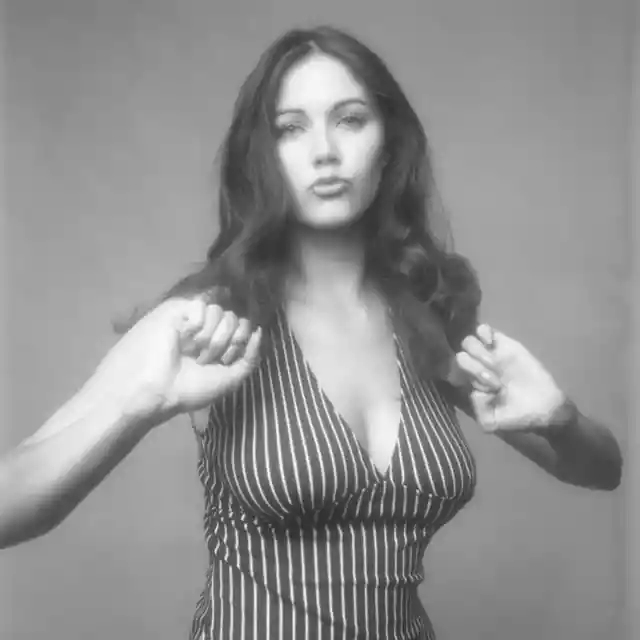
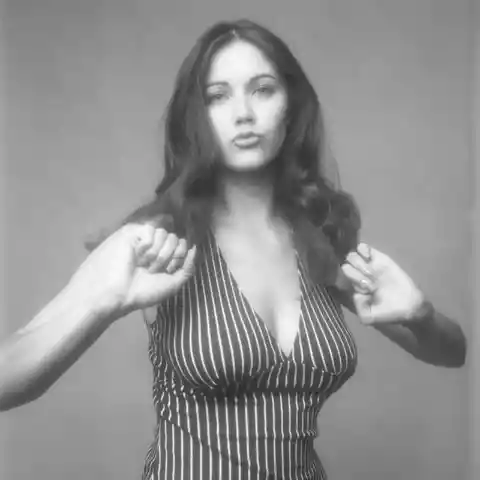
Lynda Carter, always destined for the spotlight, didn't initially dream of being a screen star. In her early days, her heart was set on singing, but the big question was how to get there, how to be that singer with a band backing her up on stage.
Her journey took an unexpected turn at the age of 21. It all started in Arizona, with a beauty pageant. Winning the title of Miss World America in 1972 wasn't just a crown; it was her golden ticket, her chance to write her own destiny.
For a while, Carter rode the waves of music, touring with a band. But fate had other plans. Producers who had spotted her during the pageant saw something more in her. They weren't thinking about her rock career; they had a different spotlight in mind. Small roles on television started coming her way, and before she knew it, Lynda Carter was no longer just dreaming of the stage – she was living it, never looking back.
When Skills Weren't Enough: The Harsh Realities of the Great Depression
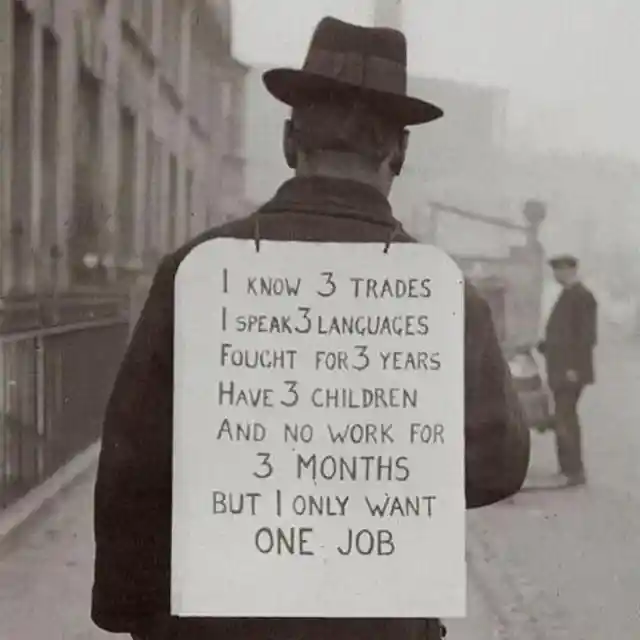
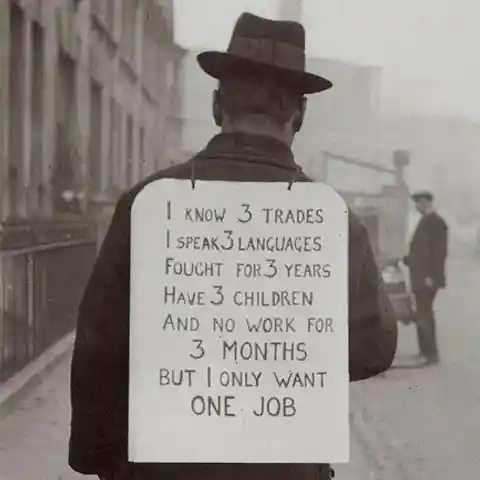
Back in the days of the Great Depression, it was a tough time for everyone, even the brightest and the hardest workers. Jobs were as scarce as water in a desert. It wasn't that people weren't desperate for work; the problem was there simply wasn't any money circulating. This grim reality hit everyone hard, from big companies to individual workers, crumbling the job market from the top down.
I remember hearing about this one person, a proud veteran brimming with skills, more than most could boast. Yet, even they couldn't land a job. That's how dire the situation was. Many folks had no choice but to pack up and head west, hoping to scrape by as fruit and vegetable pickers. But then there were those who decided to stay put, clinging to a glimmer of hope that things would eventually turn around.
Behind the Glamour: The True Story of a Legendary Hollywood Photo
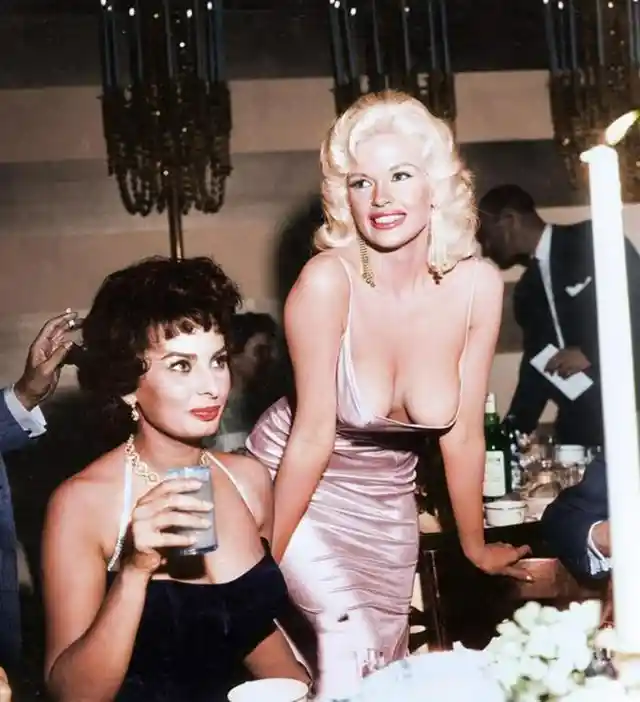
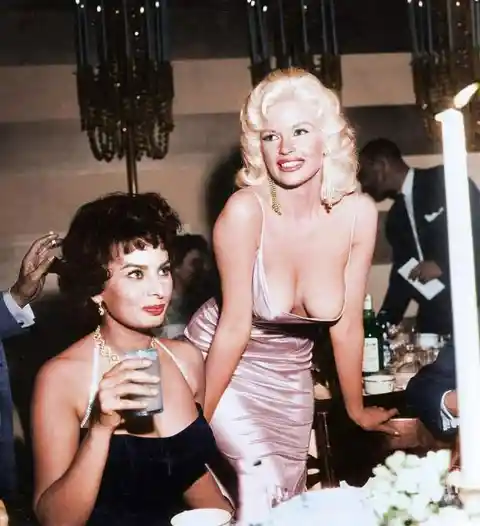
I came across a photo recently that's just mesmerizing. Picture this: two stunning women, each a symbol of beauty in her own right, and a scene that's more than just a visual treat. It's a snapshot that tells a tale, one that goes beyond what you see at first glance.
The story behind this photo is steeped in Hollywood lore. It features Sophia Loren, the Italian beauty, seemingly trying to maintain her composure while Jayne Mansfield, in a daring low-cut dress, steals the spotlight. But, as it turns out, the real story isn't quite so dramatic.
Flashback to 1957, Paramount is throwing a grand welcome bash for Sophia Loren in Hollywood. Among the glittering guest list is Jayne Mansfield. She arrives, not to stir up drama, but to catch a bit of the limelight for herself. According to Loren, Mansfield made a beeline for her table and struck a pose for the eager photographers. Loren recalls not minding Mansfield's antics; after all, grabbing the press's attention was just part of the game back then.
1953 Article Predicts the Future: A Time Capsule of Cell Phone Technology
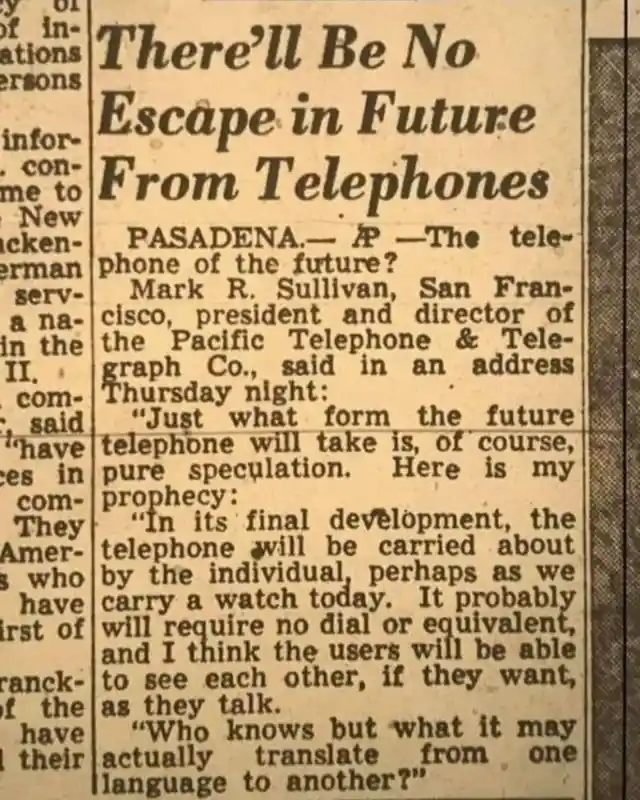
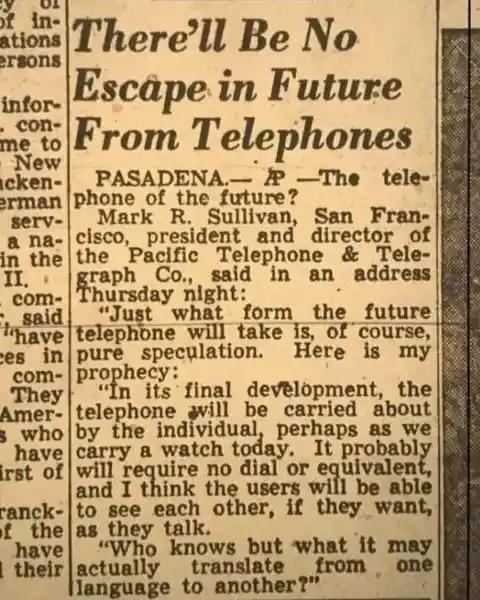
I recently stumbled upon an article that, at first glance, you'd swear was a prank. But no, this piece about the ever-present nature of the telephone is as real as it gets, and it's downright fascinating. Picture this: an article from the Tacoma News Tribune, dated April 11, 1953, making a prediction about cell phone technology that hits eerily close to home.
The author, Mark R. Sullivan, had this uncanny vision. He imagined a world where telephones were inescapable, a constant presence in people's lives, whether they liked it or not. And here's the kicker, his words: “Just what form the future telephone will take is, of course, pure speculation. Here is my prophecy: In its final development, the telephone will be carried about by the individual, perhaps as we carry a watch today. It probably will require no dial or equivalent, and I think the users will be able to see each other, if they want, as they talk. Who knows but what it may actually translate from one language to another?”
Can you believe it? Back in 1953, Sullivan was practically laying out the blueprint for the smartphones we can't live without today. It's like he had a time machine or something.
The Unforgettable Splash: Phoebe Cates and the Bikini That Changed Everything
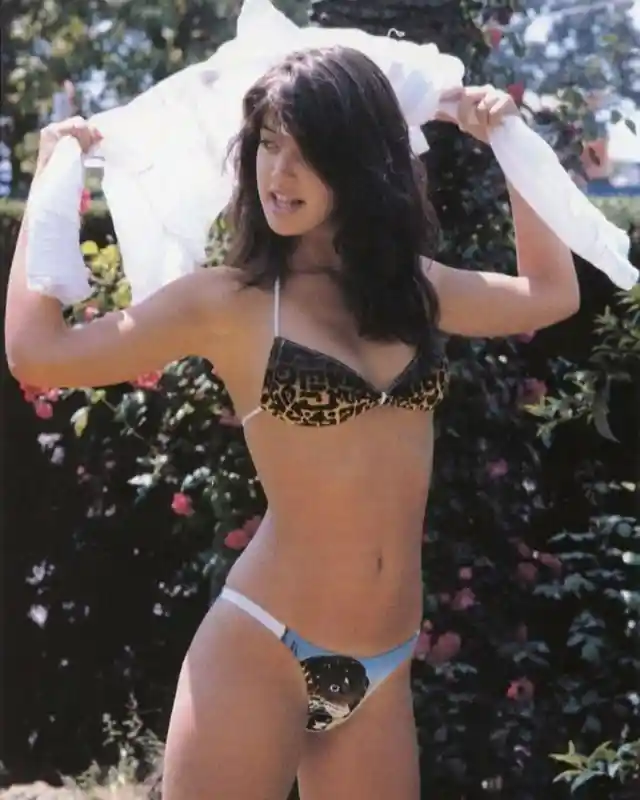
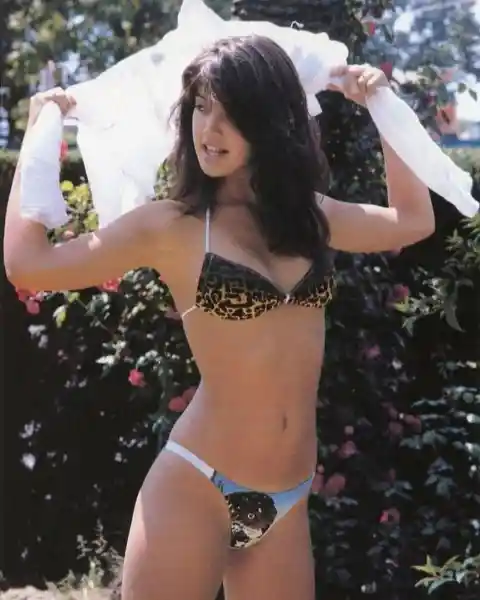
If there's one thing you won't forget about Fast Times at Ridgemont High, it's that unforgettable moment when Phoebe Cates emerges from the pool in a bikini. Let me tell you, every teenager who laid eyes on that scene was forever changed.
Now, most actresses hesitate to do nude scenes, but not Cates. She didn't really worry about how people would react to her work. In her own words, "I was only 17 when I did my nude scenes in Paradise. They were serious and quite challenging because they couldn't be easily justified. But the topless scene in Fast Times at Ridgemont High? That was hilarious, and it made it a breeze."
The Blackfoot Legacy: A Tale of Land, Loss, and Lasting Promises
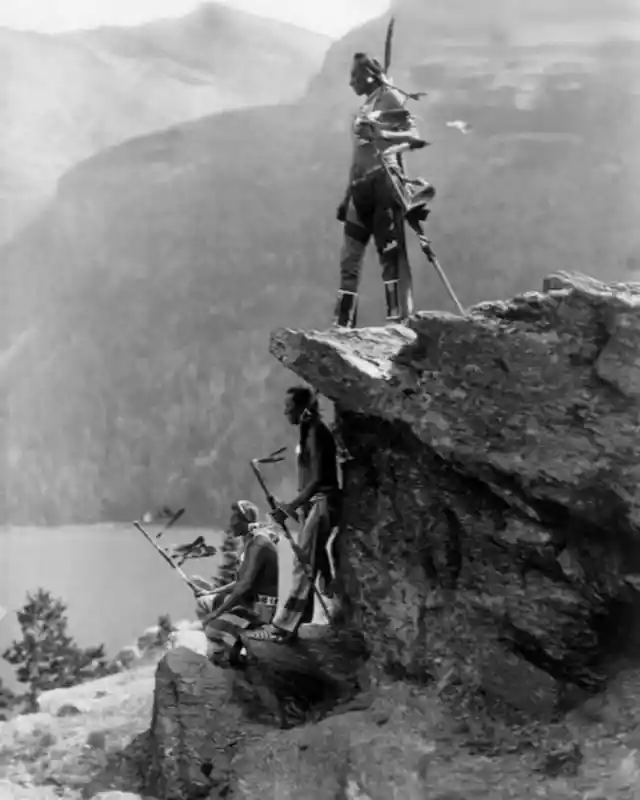
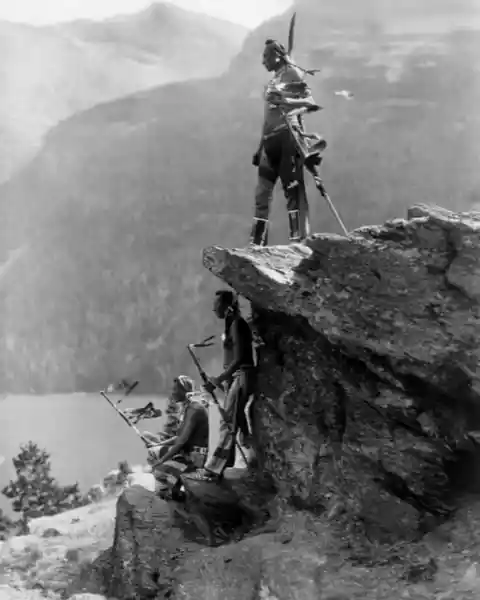
Once upon a time, the Blackfoot, a tribe of Native Americans known for their nomadic lifestyle, roamed freely. Their story began near the Great Lakes, and from there, they spread their wings across a vast expanse of land. Imagine a stretch reaching from Edmonton, Alberta, all the way down to South Dakota, and into what we now call Glacier National Park in Montana.
Life for the Blackfoot was peaceful, in tune with the rhythm of the land, until the 19th century rolled around. That's when European and American explorers showed up, bringing with them the winds of change. These newcomers had their eyes on the land, and they were determined to claim it from the Native people.
The turning point came in 1895. That's when Chief White Calf stepped up and struck a deal with the American government. The agreement? The Blackfoot would hand over about 800,000 acres of their land. In return, they got $1.5 million and a promise – the Blackfeet would still have the right to hunt on the land they had called home for so long.
Hollywood's Golden Couple: Navigating Fame and Paparazzi in the '70s
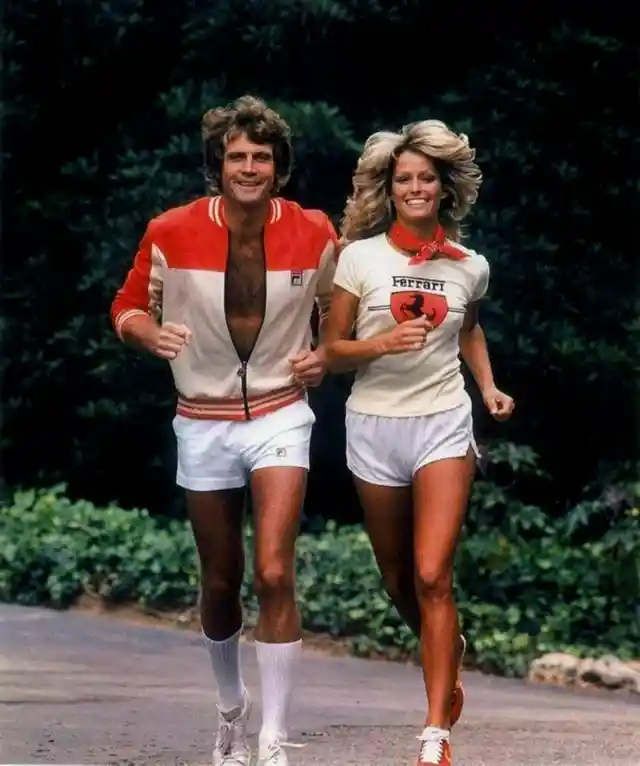
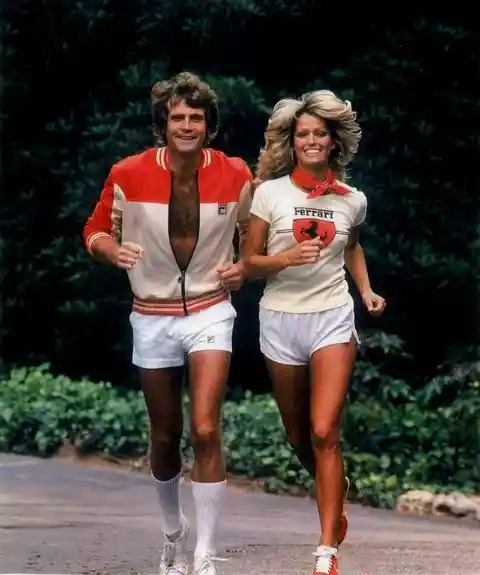
Back in the 1970s, Lee Majors and Farrah Fawcett were the talk of the town, the kind of celebrities everyone knew and talked about. He was the iconic $6 Million Man, and she? She was kicking butt in "Charlie's Angels." But that's not all. Farrah was also the dazzling star of the world's most popular poster, the one that probably adorned every teenager's wall.
Now, here's a little nugget of behind-the-scenes trivia: Majors himself played a key role in choosing that famous photo of Fawcett in the red swimsuit. But their life together was more than just picking out swimsuit photos. They were each other's rock, especially when it came to dealing with the constant flash of cameras. Majors once shared with People, “It was hard to get around. It was not quite as hard as it is today with everyone has a cellphone and the social media is so quick. Back then we only had to deal with the paparazzi at large. A lot of time you could evade them, but not all the time.”
Their life was a whirlwind of fame, flashing cameras, and the occasional quiet moment when they managed to slip away from the ever-watchful eyes of the paparazzi.
The Lusenko Legacy: A Remarkable Tale of Ten Brothers Surviving the War

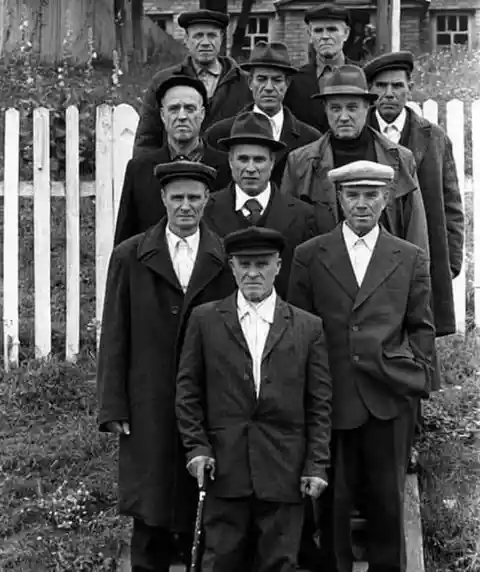
When Pearl Harbor was attacked, it was like a call to arms that echoed across America, reaching into every home and heart. Men from all walks of life, from every corner of North America, stepped up to join the military. They were ready to defend freedom alongside the Allies, whether that meant being sent to Germany, Japan, or some remote battlefield in between. Sadly, many of these brave souls never made it back home.
Amidst this backdrop of sacrifice and loss, there's this incredible story of the Lusenko family. Imagine this: 10 brothers from one family enlisting to fight in the war. And here's the truly remarkable part – all of them survived. It's a tale that makes you wonder, were they just incredibly lucky? Or was it a case of being at the right place at the right time?
Whatever the reason, the end of the war must have been a time of unimaginable joy for the Lusenko family. To have their 10 patriarchs return from such a harrowing ordeal, when so many others didn't, was nothing short of a miracle.
From Post Office Lines to Supermodel Stardom: The Unlikely Discovery of Christie Brinkley


You wouldn't believe it, but Christie Brinkley's journey to stardom began in the most mundane of places – a post office line. It's true, sometimes life's biggest surprises come in the most ordinary moments, like when you're just standing there, waiting to send off some mail.
Picture this: It's 1972, and Brinkley is there, probably thinking about her day, when out of the blue, a photographer spots her. This isn't just any photographer, but one who sees something special in her. He asks if he can take her photo. Little did she know, that impromptu photo shoot would open doors to a world she had never even dreamed of.
Fast forward a bit, and there she is, gracing the cover of the Sports Illustrated Swimsuit Issue not once, not twice, but three times in a row. And it doesn't stop there – she even had two calendars that were all about celebrating her. Sure, she might be retired now, but in the hearts of many, Christie Brinkley will forever be the quintessential supermodel.
From Silent Film to Comic Book Infamy: The Unsettling Origin of the Joker's Grin
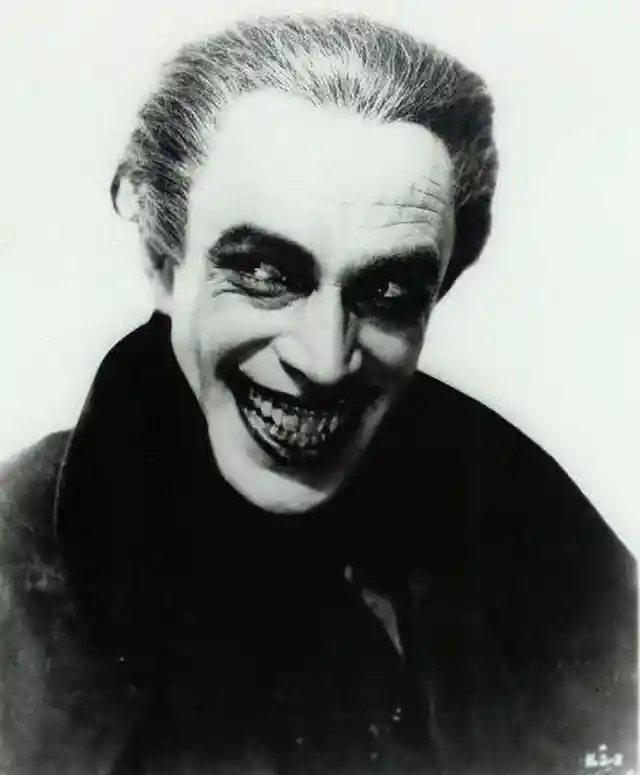
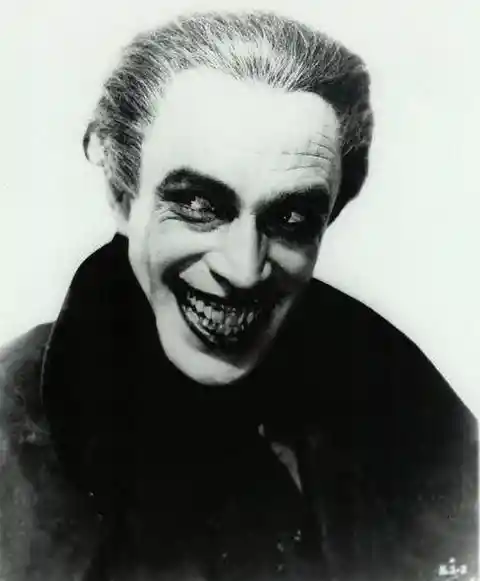
Let me tell you about a picture that might seem like it's straight out of a Batman movie, but it's not. It's actually a press photo from the silent film "The Man Who Laughs." Directed by Paul Leni, this movie is a masterpiece of German Expressionism. It's so eerie and unsettling that most people mistake it for a horror film, even though it's really a drama at its core.
The film's lead, Conrad Veidt, was a chameleon when it came to acting. He had this incredible ability to transform himself for any role, completely immersing himself in his characters. In "The Man Who Laughs," Veidt plays Gwynplaine, a man who becomes the main attraction of a traveling carnival. Why? Because of the permanent, unnerving grin carved into his face when he was just a child.
But here's the kicker – Veidt's appearance in the film didn't just send shivers down the spines of its viewers. It went on to inspire one of the most iconic villains in comic book history – the Joker. That's right, the Joker's entire look, from his hair to that spine-chilling grin, owes a lot to Conrad Veidt's portrayal of Gwynplaine. Even today, every new rendition of the Joker still carries echoes of Veidt's unforgettable performance.
Brothers in Arms: Uniting Through Art on the Set of 'Next of Kin'
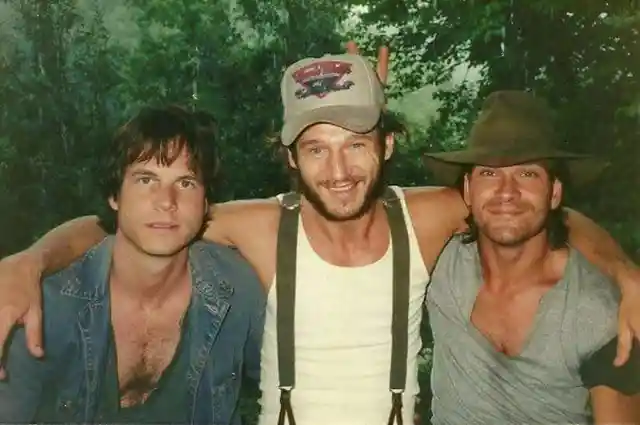
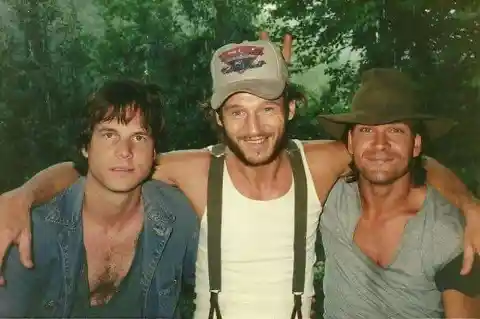
I stumbled upon a photo that took me straight down memory lane, like a time machine powered by nostalgia. It was taken on the set of "Next of Kin," capturing three iconic actors in a single frame, two of whom, sadly, are no longer with us. There's something about this photo that speaks volumes – it shows how these men, hailing from three different walks of life, formed a bond as strong as brothers while working together.
"Next of Kin" isn't a light watch by any means. It's a story about a Chicago police officer who heads back to his roots in Appalachia, on a mission to find the person responsible for his brother's death. The subject matter is heavy, but the way the cast brings it to life? It's nothing short of remarkable.
Despite the intensity of the film's theme, it's clear from this photo that the actors found a way to connect deeply during the shoot. They weren't just colleagues or co-stars; they became brothers for life, united by the unique experience of bringing this powerful story to the screen.
The Original Kings of Comedy: Reliving the Golden Era of Saturday Night Live
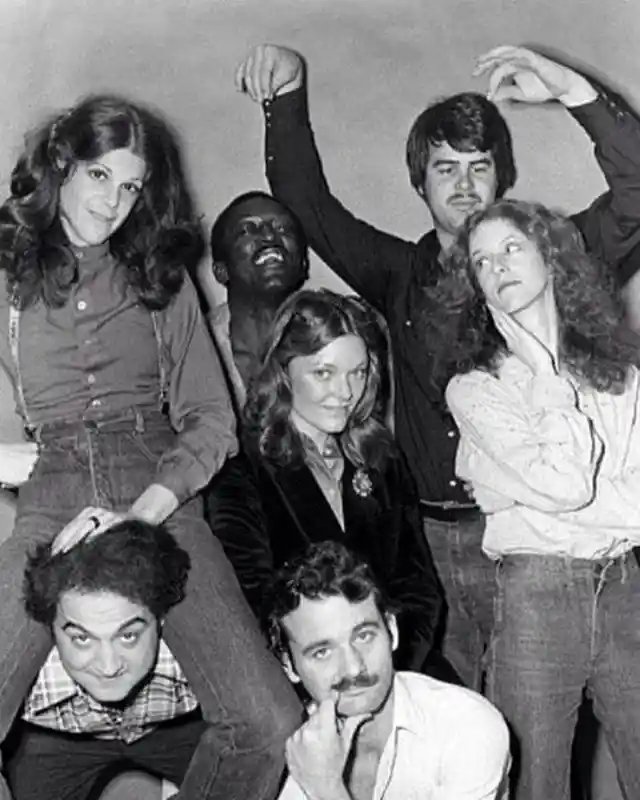
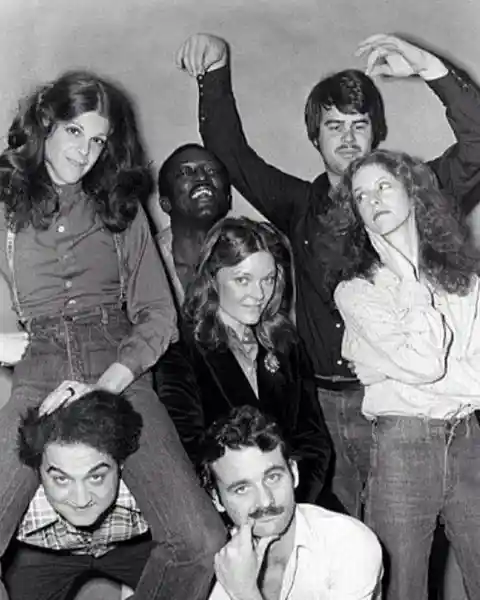
Back in the day, when "Saturday Night Live" first hit the airwaves, there was something truly magical about its cast. That first season had Chevy Chase nailing the straight man role, but then he took off, chasing dreams in Hollywood. And who stepped in? None other than Bill Murray, the king of iconic irony.
The original crew, known as The Not Ready For Prime Time Players, brought to the table some of the most captivating and wildly chaotic comedy performances of the '70s. They were pioneers, setting the stage for a whole new generation of alt comics. These comics practically worshipped the ground these SNL legends walked on, drawn to their helter-skelter comedy style that always seemed like it was on the brink of falling apart – but never did.
And let's be real, everyone has their favorite SNL cast. It's like an unwritten rule. If you've got a heart and a sense of humor, there's bound to be one cast that holds a special place in it, right?
The Last Glimmer: Reflecting on Marilyn Monroe's Final Days
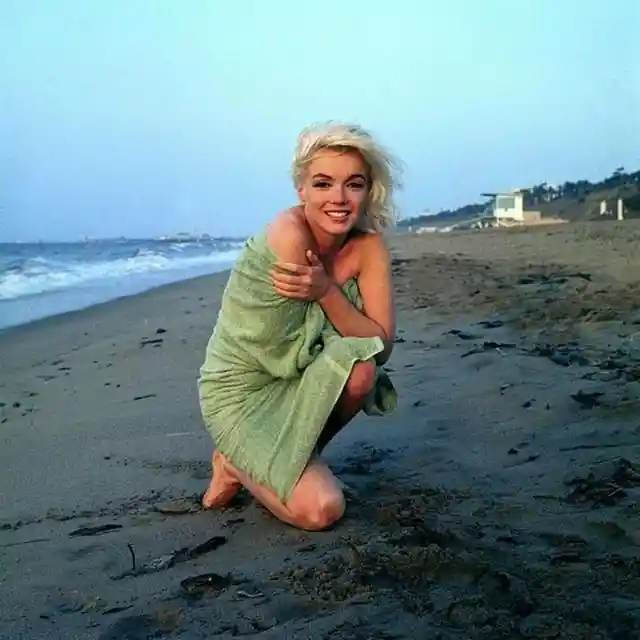
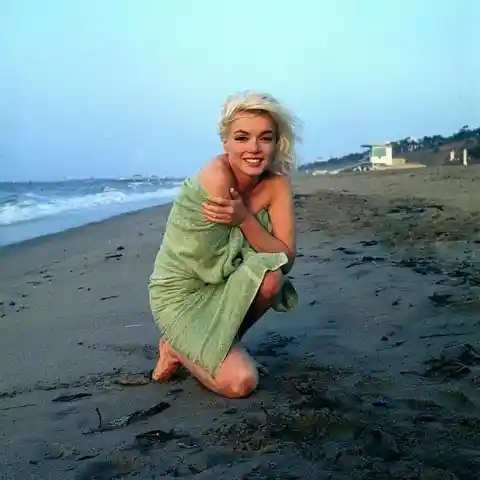
I remember coming across a photo taken on Friday, July 13, 1962, by George Barris. It's one of the last photos ever taken of Marilyn Monroe. At that moment, she was newly divorced from her third husband, Arthur Miller, and it seemed like she had the whole world at her feet. But, as fate would have it, she could never quite reach out and grab what was right in front of her.
The early '60s should have been Monroe's time to shine. She was a megastar, hailed as the most beautiful woman in the world. But beneath that glittering surface, she was fighting a tough battle against the Hollywood system, a battle that was slowly wearing her down.
Monroe's final year was a rollercoaster of highs and lows. She was trying to put her life back together, yet her addictions kept pulling her back. It's a sad truth, but often the brightest stars, like Monroe, burn out far too quickly.
A Veteran's Reflection: Bridging Past Battles with Present Memories
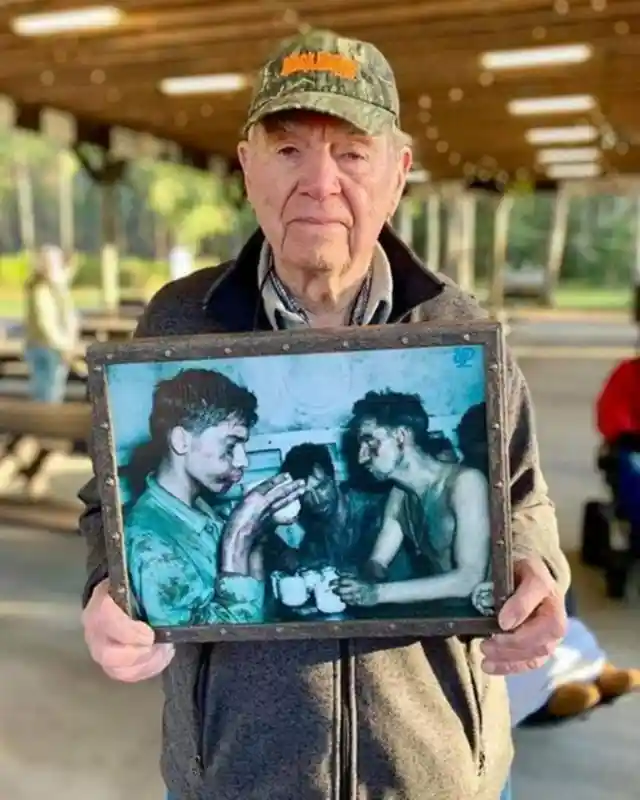
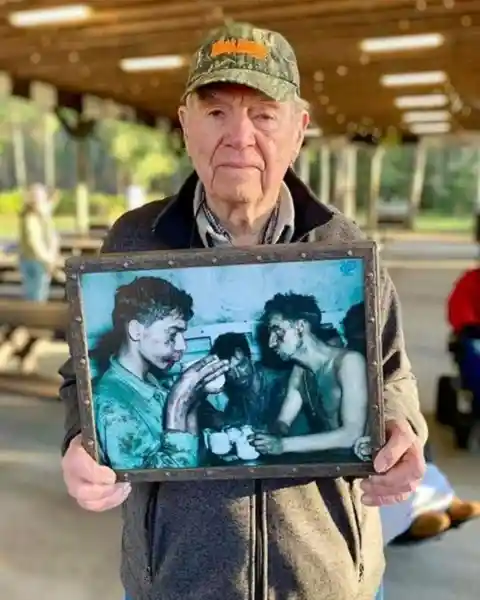
I came across this striking image of Faris Tuohy, a World War 2 veteran, holding a photo of his younger self. It's not just any photo, though. It's a snapshot taken right after an intense battle, a moment frozen in time from one of the most tumultuous periods in history.
Tuohy was among the brave souls who answered the call to serve in the U.S. military when World War 2 broke out. The photo he's holding captures a moment of respite in the mess aboard the USS Arthur Middleton. This was right after a grueling two-day fight for Engebi in the Eniwetok Atoll. In that battle, the 1st and 2nd Battalions of the 22nd Marines faced a fierce enemy, resulting in the death of 736 Japanese soldiers and Korean laborers, with only nineteen surrendering.
Later on, Tuohy shared a personal, harrowing detail from his time in service. He revealed that he was actually a victim of friendly fire when USAAF aircraft mistakenly attacked the Marines. As for the rest of the men in that old photo, he remained unsure of their fates. It's a poignant reminder of the complexities and tragedies of war, seen through the eyes of a man who lived it.
From French Riviera to Film Fame: Kelly LeBrock's Unexpected Journey to 'Weird Science'


The 1980s, a time when Kelly LeBrock became the dream girl for an entire generation of self-proclaimed nerds, all thanks to her role in "Weird Science." But did you know how close we came to never seeing her in that iconic film?
Back when the producers were hunting for the perfect actress, LeBrock was living it up as a model in Europe. She was actually soaking up the sun in the South of France, hanging out with none other than the former policeman turned rock star, Sting. And honestly, who would want to leave that to go work on a movie set? LeBrock herself said it best: “When I was first offered that role I turned it down because I was having way too much fun in the South of France with Sting, and I didn’t want to go back to the U.S., so they had hired someone else. After about three weeks of shooting the girl had to be fired, so they called me up and said we will give you whatever you want, so the next day I was on a plane to Chicago. My first scene was the shower scene…”
So, there she was, one day basking in the French Riviera, the next on a plane to Chicago, all because the producers realized they couldn't make "Weird Science" without her. And that's how LeBrock became the unforgettable fantasy woman in one of the quirkiest comedies of the '80s.
Timeless Love: Celebrating a Lifetime Together at Their Special Spot


In a world that often feels like it's spinning out of control, there's something incredibly heartwarming about seeing love that stands the test of time. Imagine a couple, hand in hand, who've been together longer than many of us have been around. It's not just romantic; it's a beacon of hope, a reminder that there's still some good and light left in this world.
Now, picture this: an elderly couple returning to the very spot where they once sat as young lovers. They strike the same pose, a silent testament to their enduring love. It's as if they're saying, "We might have grown older, our faces might have changed, but this love – it's as strong and unwavering as ever."
It's stories like these that make us dream, isn't it? To find that special someone with whom we can share a lifetime of memories, and maybe, just maybe, find our own special rock to revisit through the years.
Cher and Elliott: A Glorious Collaboration Beyond Music and Movies
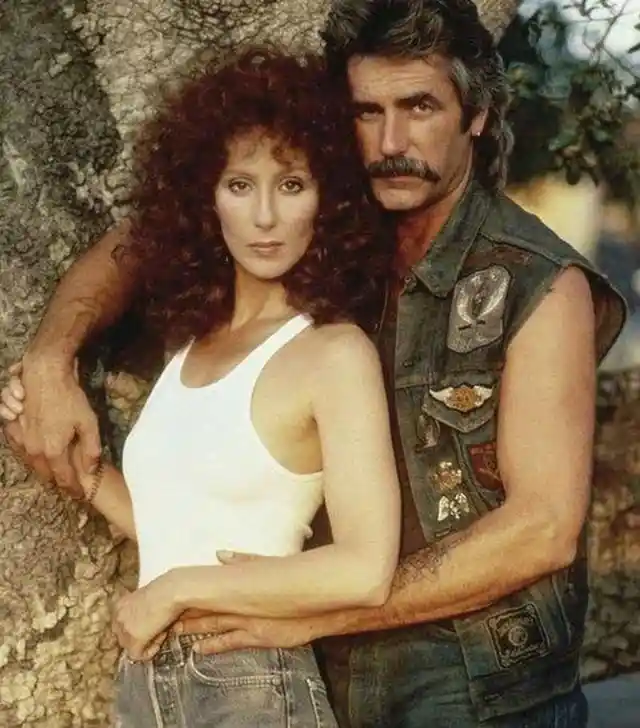
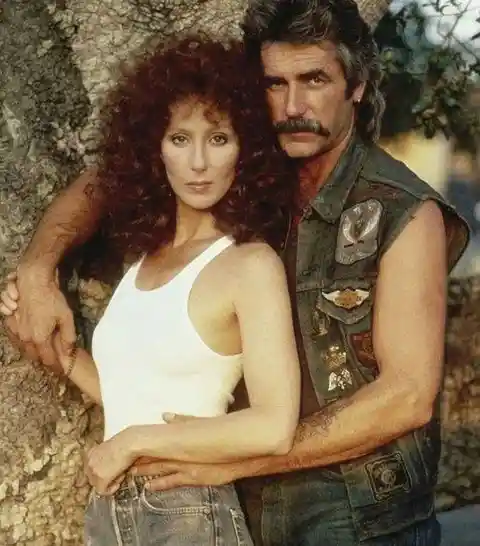
Let me take you back to a time when Cher, the iconic singer, decided to step into the world of film. To many in the movie biz, she seemed like an outsider, a musician trying her hand at acting. But her co-star in "Mask," Sam Elliott, he saw her in a completely different light. He wasn't just a fan of her music; he genuinely enjoyed working alongside her.
Elliott once shared with Entertainment Weekly, "I was a Cher fan when I was still living up in Portland. My mom and I were there, and I was going to school, and my dad had died, but my mom and I used to watch The Sonny and Cher Show religiously. I’ve always had a thing for female singers, for whatever reason… I loved Cher. I mean, what the f*ck? Cher’s Cher, you know? I mean, what’s there not to love about her. She’s one of the most outrageous people I’ve ever spent time with, and she’s wonderful to work with. It just was a glorious f*cking period of time.”
Elliott's words paint a picture of a time filled with admiration and respect, not just for Cher's musical talents but for her as a person and a colleague. It's a reminder of how sometimes, the most unexpected pairings in Hollywood can turn out to be the most memorable.
A Soldier's Story: Remembering Larry Wayne Chaffin and the Echoes of Vietnam
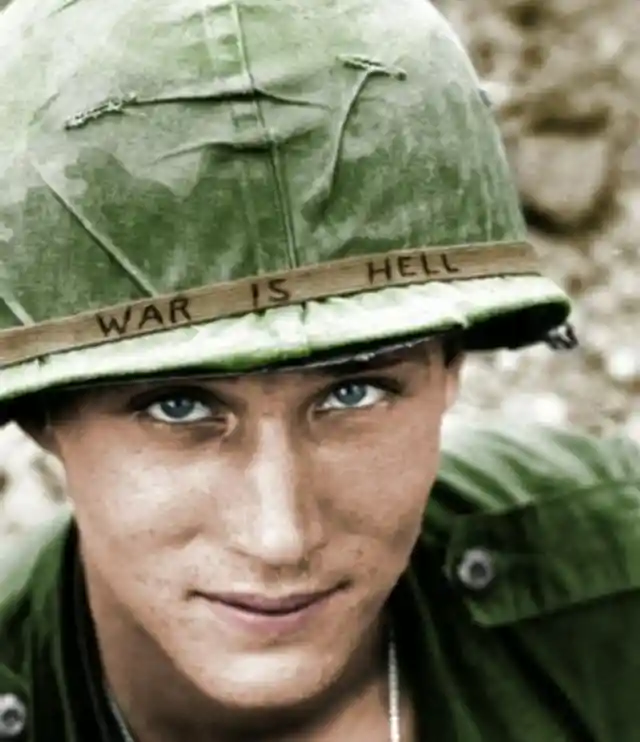
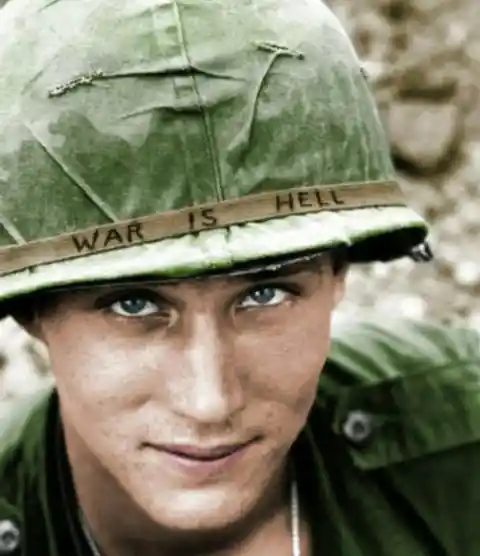
I remember seeing this powerful photo, captured by AP photojournalist Horst Faas on June 18, 1965. It was taken while he was with the 173rd Airborne Brigade Battalion at Phouc Vinh airstrip in South Vietnam. This image, in many ways, encapsulates not just the Vietnam War, but the essence of conflict itself, past and future.
In the photo was Larry Wayne Chaffin, a young man of just 19, serving his country in the Marine Corps. His time in the service was only a year, but like so many soldiers, the transition back to civilian life in the States was a tough journey.
Tragically, Chaffin's story doesn't have a happy ending. He passed away in 1985, suffering complications related to diabetes – a condition believed to be a consequence of his exposure to Agent Orange during the war. His story is a poignant reminder of the sacrifices made by brave individuals like him, sacrifices made in the name of our country. It's crucial that we remember and honor these sacrifices, keeping the memory of people like Chaffin alive in our hearts and history.
The Runaways: A Tale of Talent, Growth, and Diverging Paths in Rock History
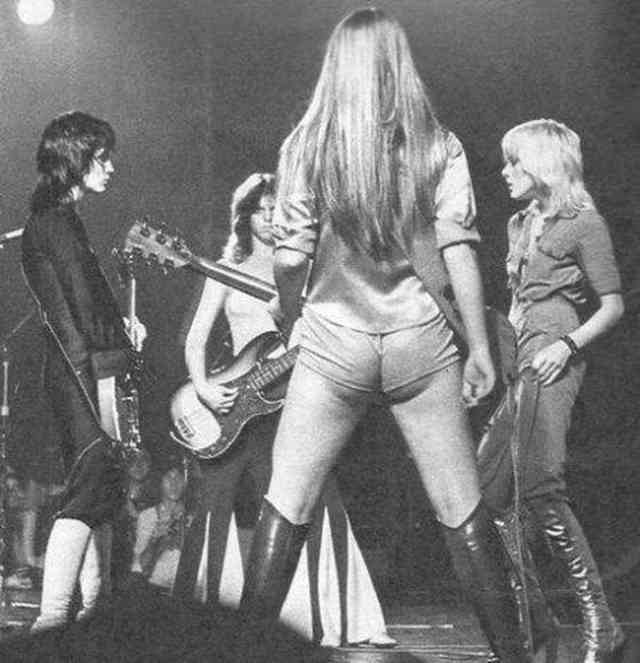

Let me tell you about The Runaways, a band that was like a comet streaking across the sky of rock music. These five young women came together in a burst of energy and raw talent, creating some of the most unforgettable tunes in the mid-70s. But, like all good things, their time together was fleeting, and after five years, they went their separate ways.
This band was a powerhouse of talent. We're talking Joan Jett, Lita Ford, Micki Steele – names that would become legendary. They left an indelible mark on music, becoming one of the most influential bands of their time. But why did such a dynamic group drift apart? Joan Jett shed some light on this during a chat with Lars Ulrich from Metallica. She said, “I think as we each grew up and were figuring out more who we were as musicians, and really the kind of music we wanted to play, it started to diverge a little bit… We all got along fine, so there wasn’t anything like that. It was not a personality thing. We just grew in different directions. I just thought, ‘I don’t wanna get fired from a band I started. Let’s just part ways.'”
It wasn't about clashing egos or bitter fights; it was simply a matter of growing up and growing apart. Each member was finding her own path, her own sound. And in a way, that's the beauty of The Runaways' story – a group of young women, each strong in her own right, coming together to create something extraordinary, and then boldly stepping into their individual futures.
Led Zeppelin: Rocking the Universe and Finding the Power in Performance
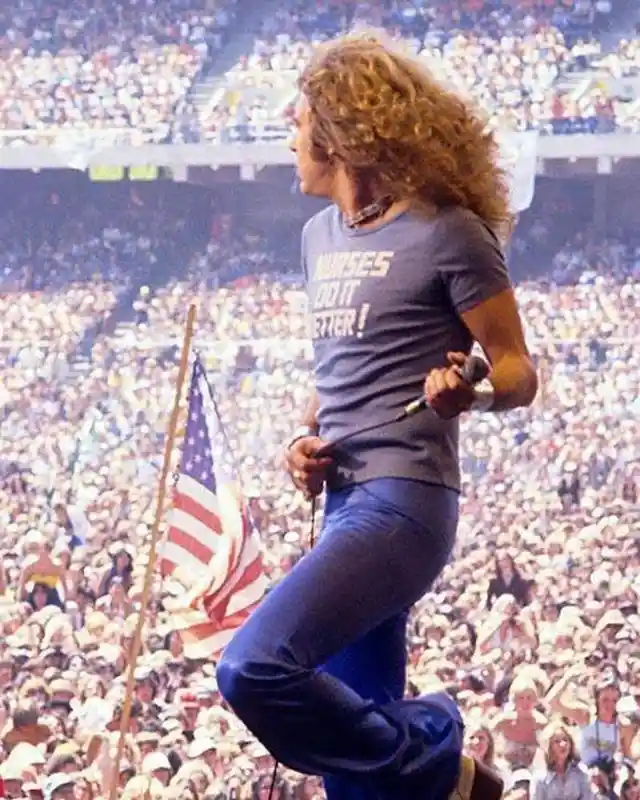
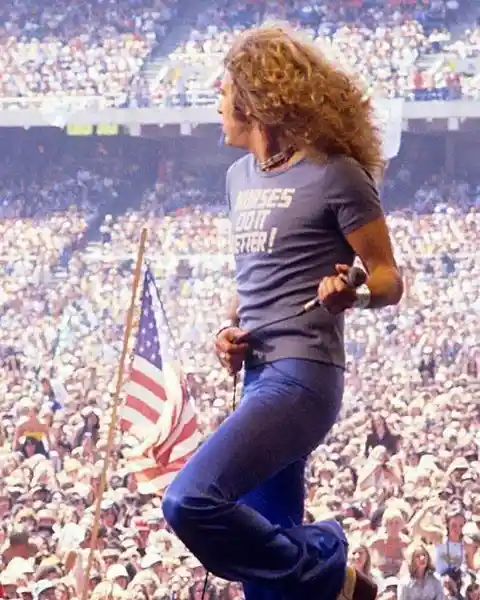
Let me take you on a journey with Led Zeppelin, a band that redefined rock n' roll. Imagine the roaring drums of John Bonham, the mesmerizing guitar riffs of Jimmy Page, and then there's Robert Plant's haunting vocals, a sound so powerful it could whisk you away to another dimension.
Robert Plant, the man behind that iconic voice, once shared how it all began for him. It wasn't about fame or hits; it was about the sheer thrill of performing. In a 1977 interview with Interview Magazine, he opened up about his early days. He said, “When I started all I wanted to do was get out in form. I just wanted to sing. A simple thing. I loved the feeling of letting fly, of pushing as far as I could go with my voice. The only way you can really graduate how you do it is by doing it regularly to people who don’t have to be super impressed. You can do it in the studio all day long but you don’t get the flashback that you get onstage.”
For Plant, it was all about the raw, unfiltered connection with the audience. The studio was one thing, but the real magic happened on stage. That's where he could push his voice to its limits, feel the energy of the crowd, and truly come alive. It's a reminder of what makes live music so captivating – the exchange of energy, the unspoken bond between the artist and the audience, and the pure, unadulterated joy of performance.
Anne Frank's Pre-Hiding Days: Life in a Changing World
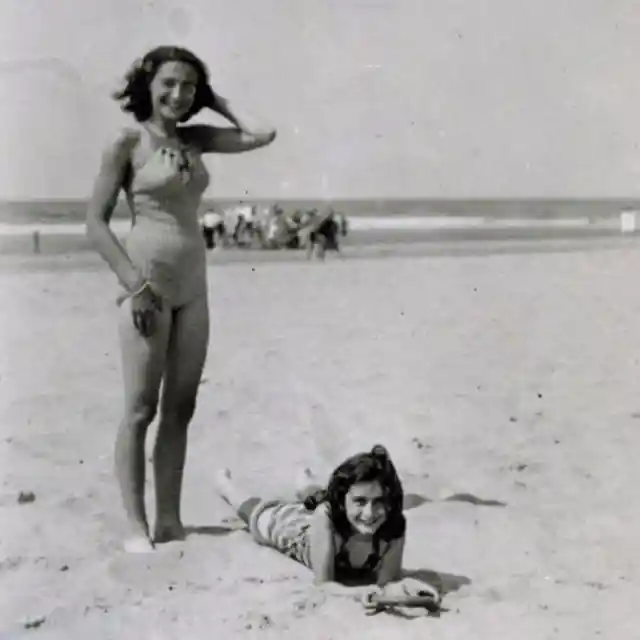
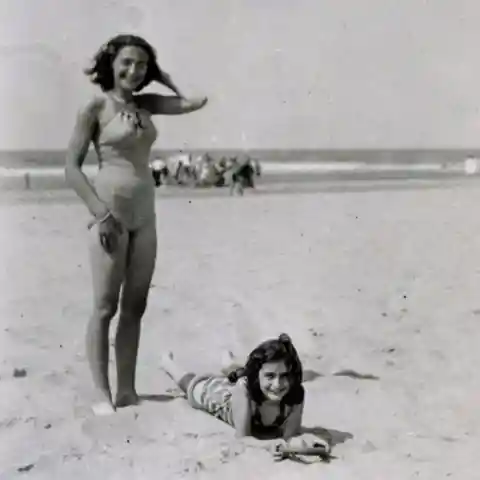
Let me paint a picture of Anne Frank's life before she became a symbol of hope and resilience during the darkest times of World War II. Back then, she was just an ordinary girl, growing up in an upper-middle-class Jewish family in Germany.
But the world was changing rapidly. On January 20, 1933, Adolf Hitler was announced as the chancellor of Germany, casting a shadow of uncertainty over Jewish families like the Franks. In response to this ominous shift, the Frank family made a life-altering decision that fall—they packed up and moved to the Netherlands. Anne Frank herself chronicled this pivotal moment in her diary, writing, “Because we're Jewish, my father immigrated to Holland in 1933, where he became the managing director of the Dutch Opekta Company, which manufactures products used in making jam.”
Life in the Netherlands seemed relatively normal for a while. But then, in 1939, everything changed with the Nazi invasion of Poland. Anne Frank captured the turbulence of those times when she wrote, “After May 1940, the good times were few and far between; first there was the war, then the capitulation and then the arrival of the Germans, which is when the trouble started for the Jews.”
Little did she know that her own story would become a beacon of hope amid the darkest of days.
Rocking Against Expectations: Stevie Nicks and Christine McVie's Fleetwood Mac Journey
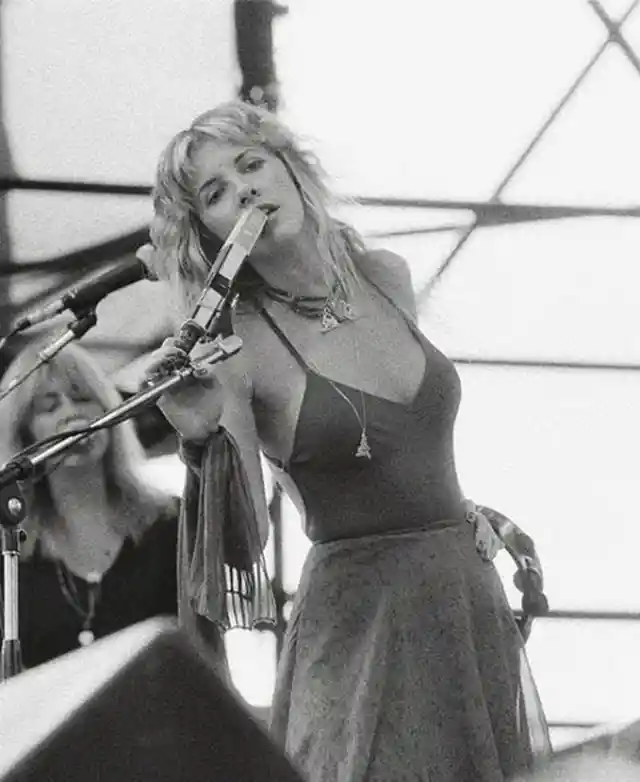
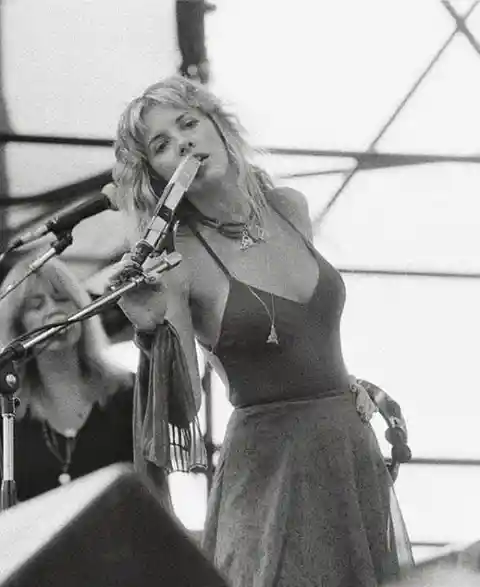
Being a woman in a band, especially in one of the most legendary bands ever, comes with its own set of challenges. There are these expectations that weigh on you, and it seems like everyone assumes you're just there for the ride.
But let me tell you about Stevie Nicks and Christine McVie, the dynamic duo of Fleetwood Mac. They weren't about to let anyone underestimate them. In fact, they proved all the naysayers wrong during their time with the band. These two weren't just riding along; they were driving the creative engine of Fleetwood Mac.
And here's the kicker – they weren't out partying every night, chasing after guys like you might expect. Nope, as Nicks herself explains it: “Christine [McVie] and I didn't go out. We didn't pick up guys. We'd hang out, play cards, and watch movies. It wasn't that much fun.”
Their focus was on making timeless music, and together, they crafted a legacy that still resonates today in the world of rock 'n' roll.
From Aussie Doubts to Movie Magic: Olivia Newton John's Journey as Sandy in Grease
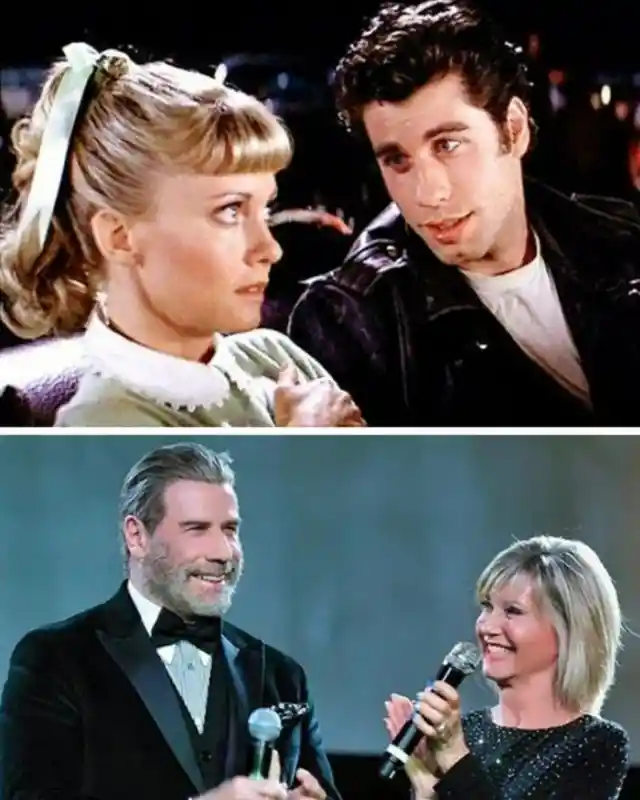
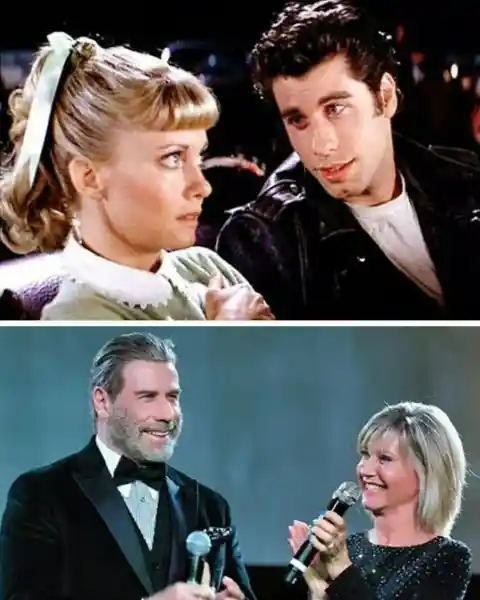
Those long summer days that stretch into even longer summer nights. It's a time when the '50s were in full swing, and all that mattered were sock hops and car races. Now, that's the world Grease whisked us away to.
You'd think Olivia Newton John, who played the iconic role of Sandy in the film, would have been confident in her ability to pull it off. But nope, she had her doubts. She wasn't sure if she could truly become Sandy.
Then, it was her co-star, the electrifying John Travolta, who convinced her otherwise. In her own words, she explained to the Telegraph: “I was very nervous about making the film, because I was an Australian, but they said, ‘That’s OK, you can do an Australian accent.’ I worried that at 29 I was too old to play a high-school girl. But John was charming and really wanted me to do it, and that was one of the deciding factors. He’s a lovely man – we became great friends and he was very helpful to me on set, as I was not an experienced actress.”
Sometimes, it's the unexpected friendships that lead to movie magic.
The Icemen and Icewomen of Yesteryear
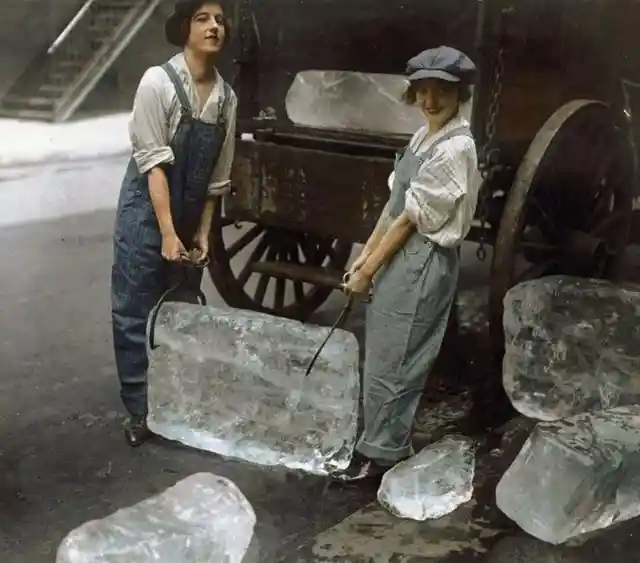
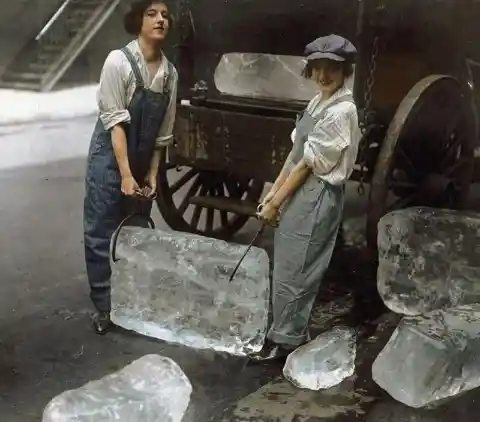
Back in the days before home refrigeration was a thing, life was a bit chillier – and not just because of the weather. People relied on massive blocks of ice to keep their food fresh and their meat safe. It's 1960, and I'm reading about this in The New York Times.
Imagine this scene: the iceman, a figure of rugged determination, wears what seems like a slicker-like black cape draping his back. His hands, protected by heavy gloves, prepare to tackle a mighty load. With a pair of tongs, he hoists the massive ice block onto his shoulder, ready to conquer staircases that lead to the upper floors of tenement buildings. That's some serious heavy lifting!
But here's the twist in our tale. It wasn't just the guys who embraced this chilly mission. These young women decided to jump in and take over when the men were away, off fighting in World War I. Instead of letting everyone's food go to waste, these fearless gals grabbed the job with gusto. Talk about breaking the ice!
Jamie Lee Curtis: The Scream Queen Turned Comedy Queen
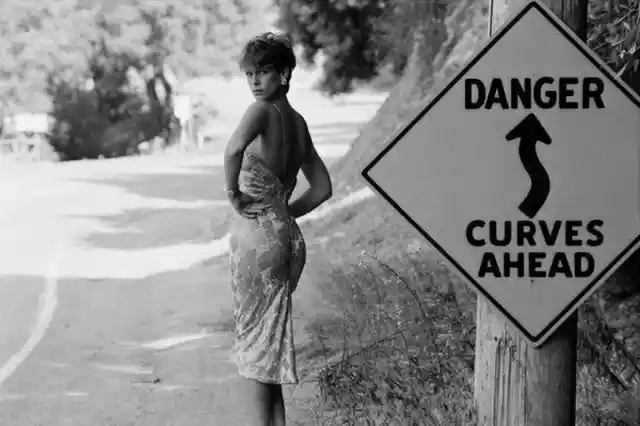
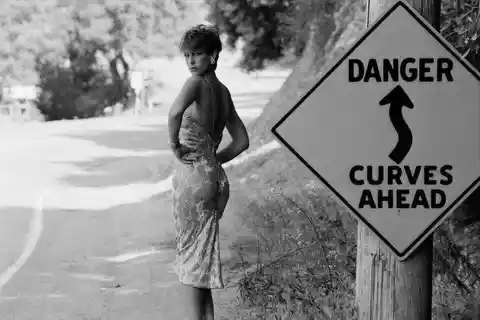
Back in the late '70s and early '80s, Jamie Lee Curtis was the ultimate scream queen. But you know how it goes, when you're known as the "final girl" in a bunch of horror films, people might assume you're a bit of a curmudgeon.
However, the '80s brought about a transformation for Curtis. She reinvented herself, stepping into roles that showcased her as a sexy icon and a legitimate comedy foil. A career evolution, you might say.
But here's the kicker: despite her changing roles and personas, Curtis has always commanded respect in the entertainment industry. In her own words, she's been in the game for a long, long time and has been successful at it since she was just nineteen. She's used to the spotlight and the constant attention from fans who stop her on the street with words of admiration. It's her gig, and she doesn't need any more attention.
A Glimpse of Chivalry in the Early '60s
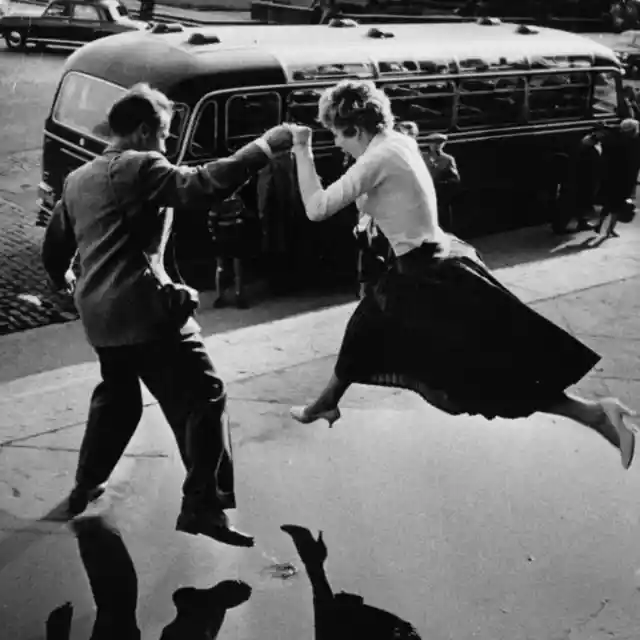
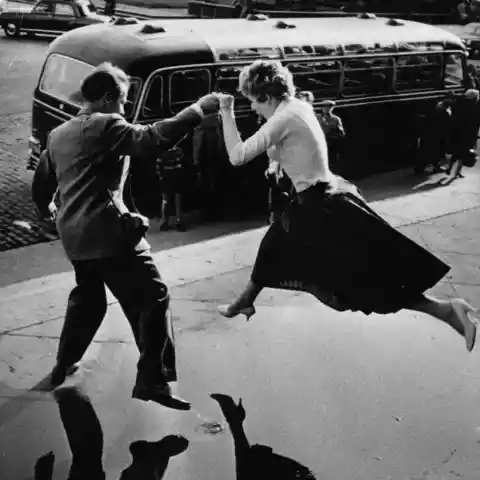
Back in the early '60s, chivalry was alive and well. It was a time when a gentleman helping a lady over a puddle to save her outfit from ruin was a common and courteous act. Ah, those were the days when such gallantry was simply part of everyday life.
However, as the late '60s rolled in, this kind of chivalrous behavior began to fade into obscurity. The world was changing, and acts like these fell out of fashion, much like the clothing styles of that era.
But here's the thing, even though times have changed, there's no rule that says we can't still be chivalrous. Whether it's helping someone over a puddle or simply showing politeness, these acts of kindness never go out of style.
The Chilling Tale of the Grady Twins
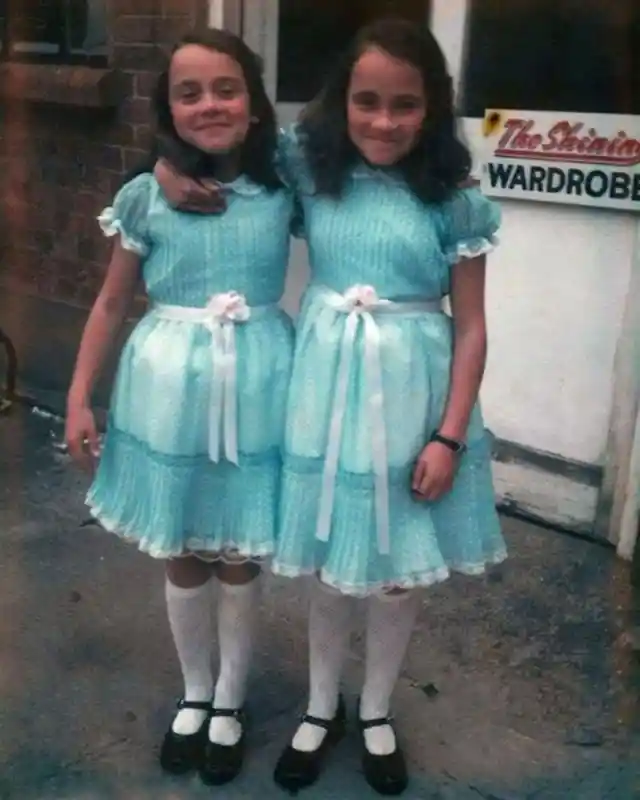
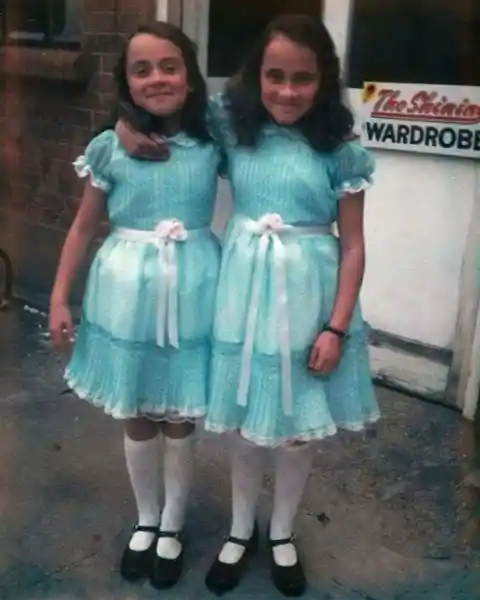
Let me take you back to the spine-tingling world of "The Shining," a movie that has haunted countless nightmares. In this terrifying masterpiece, one of the most hair-raising moments involves a pair of chopped-up twin sisters.
These sisters, who played the iconic Grady Twins, shared a behind-the-scenes story. In an interview with The Daily Mail, they revealed that the most challenging part of filming wasn't the blood, but rather, staying perfectly still while drenched in it.
You see, that eerie scene where they lie in a pool of blood was one of the last to be shot. The temperature dropped, and they worried about shivering. Stanley Kubrick, the perfectionist director, had meticulously planned the blood pour, and they had only one set of those blue dresses. So, the pressure was on to get it right the first time, or their dresses would be ruined. It was a demanding task, but Kubrick's dedication to perfection left an indelible mark on the horror genre.
Huey Lewis: The Unlikely Cameo in "Back to the Future"

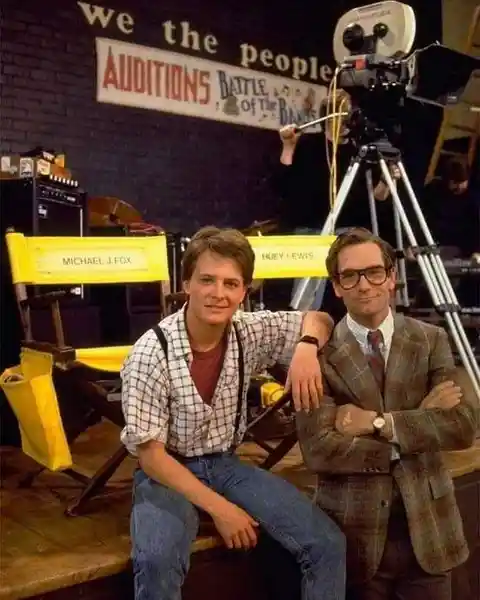
Let me share a delightful tidbit from the iconic film "Back to the Future." Among the many entertaining performances, one beloved cameo belongs to Huey Lewis of Huey Lewis and the News. What's even more remarkable is that his band provided a song for the movie.
But here's the twist – Huey Lewis initially had reservations about taking the gig, all because of the film's title. Despite meeting with the likes of Steven Spielberg and Robert Zemeckis, he hesitated. It was only after some persuasion that he decided to give it a shot. In his own words, he told USA Today, "I told Bob [Zemeckis] that the next thing I wrote, I'd send to him. So we wrote 'The Power of Love.' I had not read the script or seen the film. And they used it perfectly. I didn't even think it was going to work, so to their credit, it did." Sometimes, a leap of faith leads to timeless movie magic.
From Cowboy Boots to Quiet Suburbia: The Untold Story of Urban Cowboy's Impact and a Star's Surprising Exit

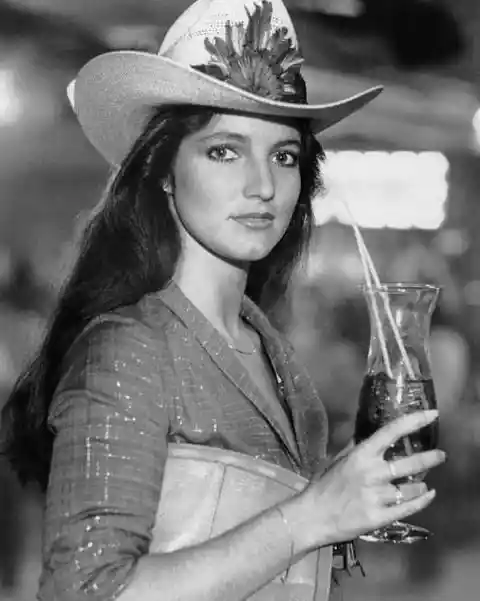
I remember it like it was yesterday. Tight jeans, mechanical bulls, and the twang of country music filling the air. That's right, I'm talking about the time "Urban Cowboy" hit the screens and boy, did it shake things up in pop culture. You either saw it in a theater and immediately fancied yourself a cowboy hat, or you were secretly humming those country tunes, pretending not to be hooked. That movie, it got under our skin in ways we didn't expect.
"Urban Cowboy" wasn't just a film; it was a fashion revolution. Suddenly, western wear wasn't just for ranchers. Plaid shirts became more than just fabric; they were a statement, a lifestyle. And John Travolta? He proved he was more than just a one-hit wonder with his stellar performance.
But let's not forget Madolyn Smith Osborne. She was brilliant in the film, no doubt about it. Yet, as the 80s drew to a close, she chose a different path. She stepped away from the glitz and glamour, opting for a life away from the camera's relentless gaze.
Elvis Presley: The Meteoric Rise of a Rock 'n' Roll Legend
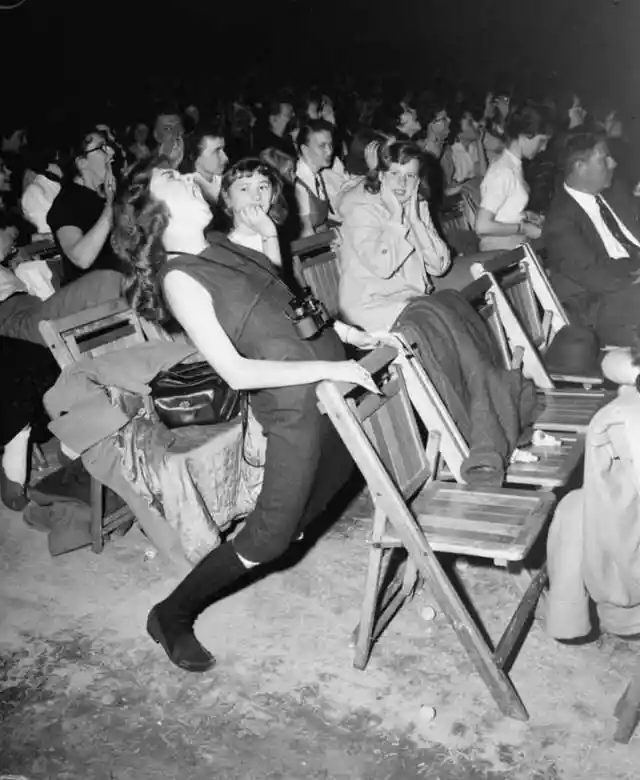
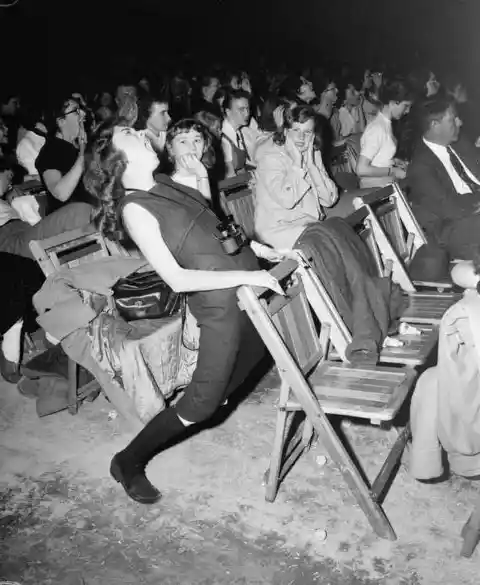
Let me take you back to a time when the world was rocked to its core by a young man from Tupelo, Mississippi. Elvis Presley burst onto the scene like a comet streaking across the night sky, leaving an indelible mark on pop culture.
But let's talk about the teenage girls, shall we? They were his biggest fans, and when Elvis took the stage, all hell broke loose. The cacophony of shrieks and yowls from the audience drowned out anything coming from that stage. Can you blame them? No one had ever quite catered to young women like this before, and suddenly, here was this hunka-hunka burning love, gyrating his way into their hearts.
Now, I'll admit, Elvis's performances didn't exactly endear him to parents. In fact, they were scandalized. But that very controversy, it was like fuel to the fire. The press and media couldn't get enough of it, and they made Elvis even more of a sensation among teenagers. It was a media blitz unlike anything the world had seen before, and little did we know, it was only the beginning.
The Temptations: The Evolution of a Legendary Group
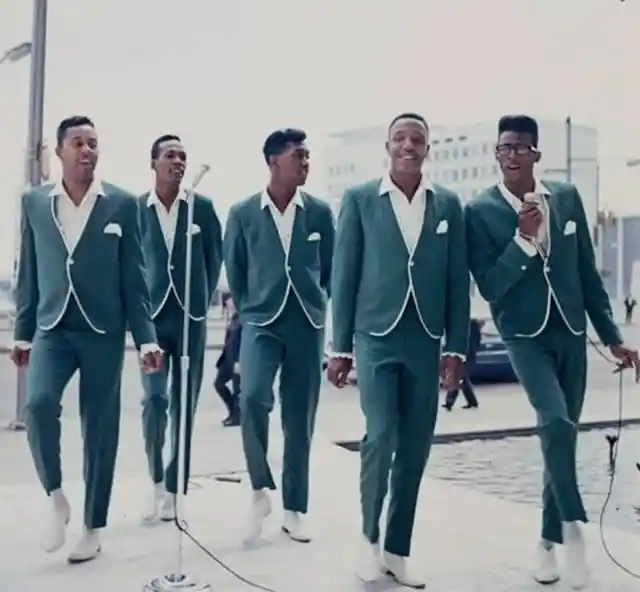

Let me tell you about The Temptations, a group that has etched its name into the annals of music history. They're not just legendary; they're the crown jewels of Motown's golden era, and their influence in the world of R&B is nothing short of iconic.
But here's the thing: the path to stardom wasn't paved with gold for these guys. No, it took them a whopping eight different singles to catch the audience's attention, a feat that seems almost unfathomable in today's music scene. So, how did they finally strike gold? It all boiled down to one word: versatility.
Picture this: Narada Michael Walden, a writer, and producer, sheds some light on the magic. "You want something pretty, they could sing the prettiest thing in the world," he says with a knowing nod. "You want something rough, rugged, they’ve got the most hardcore, rough, rugged sound you ever want to hear. They had all the gears, from Melvin Franklin doing the bass part, David Ruffin being the tiger, and then you also had the high-voice falsetto which inspired Prince, Eddie Kendricks."
And just like that, The Temptations became a force to be reckoned with, a group that could seamlessly shift from smooth melodies to gritty, soul-shaking performances. Their journey was one of patience and perseverance, but the world would soon learn that good things come to those who wait, and in their case, greatness came in the form of unforgettable music.
Robin Williams and Rodney Dangerfield: Comedy's Dynamic Duo

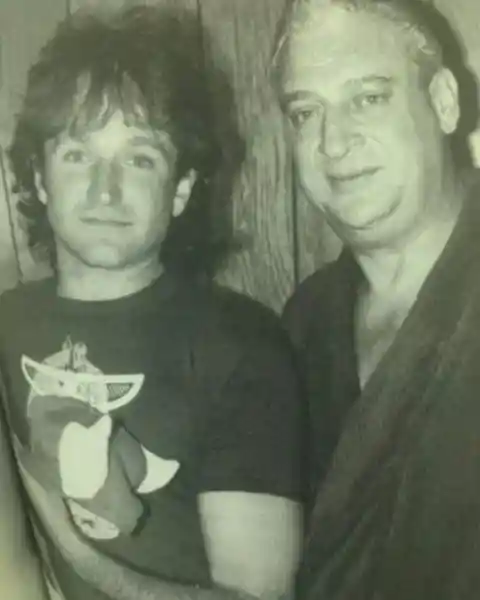
The world of comedy, filled with laughter and unscripted moments, where two iconic comedians, Robin Williams and Rodney Dangerfield, reign supreme. They may have had vastly different styles—Williams, the wild improvisation maestro, and Dangerfield, the master of practiced zingers—but beneath it all, there was a deep-seated respect that bound them together.
You see, these two weren't just comedians by title; they were performers to their very core. Sure, '90s kids might remember Robin Williams from his unforgettable film roles, but what many might not know is that he was a constant presence on the stage, just like Dangerfield.
Their shared passion for performing was a testament to their dedication. Even as the years rolled on and age crept in, both men continued to take the spotlight. Williams, with his incredible talent, ventured more into the world of screens, while Dangerfield, the relentless jokester, never shied away from the stage.
In the end, it was clear that beneath the surface, these two comedic giants had more in common than meets the eye. Their love for making people laugh, their unwavering commitment to their craft, and their ability to leave an indelible mark on the world of comedy forever united them in the pantheon of humor.
A Glimpse Back in Time: A Young Boy's Struggle
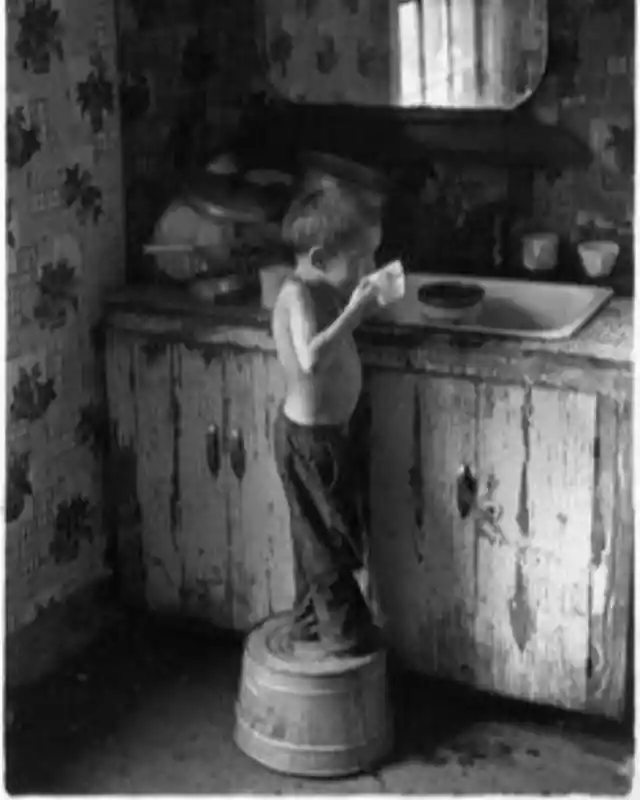

Transport yourself to the 1960s, an era of change, but this photograph seems to defy its time. In it, we see a young boy, parched and weary, leaning over a sink as he takes a sip of water. His appearance harks back to an earlier era, perhaps the 1930s or '20s. You might picture him in a coal mining family, preparing for a day's grueling work underground. But no, this snapshot belongs to the mid-20th century, a fact that leaves one feeling a sense of dissonance.
This poignant image lays bare the harsh reality of poverty. It's a stark reminder that, even in the midst of progress and prosperity, some families struggle to make ends meet, with limited access to basic utilities. The juxtaposition is striking, for within the same era, there exist those who have everything they could ever desire, while others endure deprivation and hardship.
One can only hope that this young man found a way out of his challenging circumstances as he journeyed into the next decade, leaving behind the struggles of his youth.
Capturing Moments in Time: The 19th Century Photography Challenge
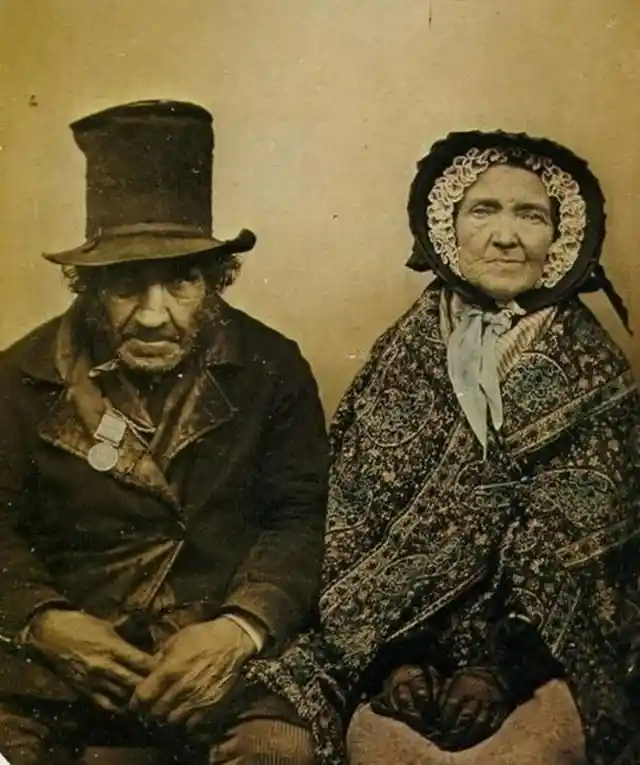
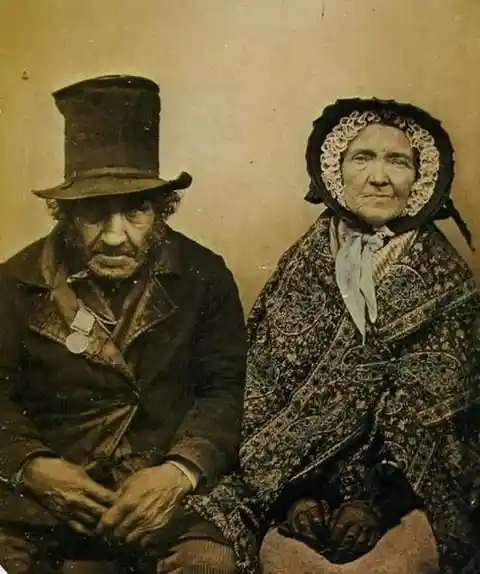
The early 19th century, a time when photography was still in its infancy. To have your likeness immortalized in a photograph, you had to possess something most of us today take for granted—extraordinary patience. Back then, it required an excruciating eight hours to expose a single photo. Yes, you read that right, a full eight hours!
Fast forward to the late 1800s, and the situation improved, but only slightly. By then, advancements had shaved the exposure time down to a relatively "swift" 15 minutes. Still, not exactly a breeze when you're seated in front of a camera, especially if your partner is joining you for the long haul.
It's no wonder that many 19th-century photographs capture subjects who appear rather solemn or even downright miserable. Maintaining a cheerful demeanor for a quarter of an hour was no small feat.
So, you might ask, why subject oneself to such a prolonged ordeal? Well, considering that most people of that era likely anticipated taking only one photograph in their entire lifetime, those 15 minutes in the spotlight were deemed a worthwhile investment in creating a lasting memento.
Danny Kaye: A Comedic Legend's Unexpected Rise
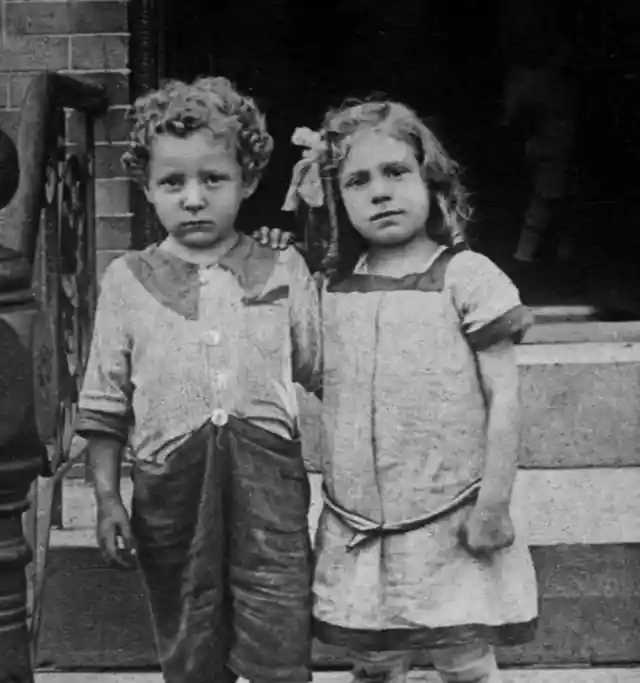
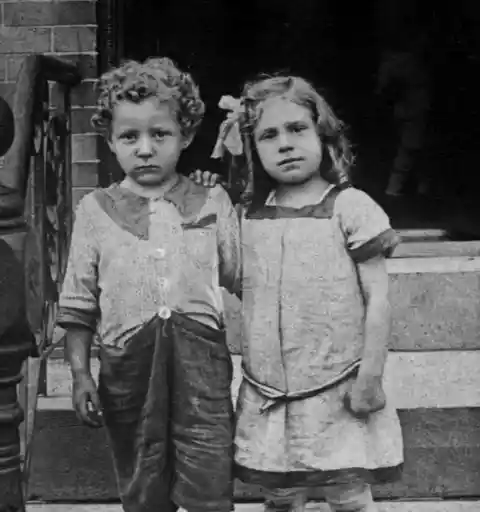
In the annals of American entertainment, few names shine as brightly as Danny Kaye's. With the ability to sing, dance, and deliver comedic gold through his spontaneous improvisations, he was a true showbiz virtuoso. But how did this multifaceted talent emerge from humble beginnings?
Born in 1913 as David Daniel Kaminsky, he hailed from a New York household where his father toiled as a Russian tailor. The path to stardom, however, diverged sharply from the conventional academic route. Instead of completing his schooling, young Danny made an audacious choice. He dropped out of his classes and ventured into the world of radio, setting the stage for his remarkable journey.
But it was the Catskills that served as the crucible of his comedic metamorphosis. Kaye transitioned into a comedian, honing his craft amidst the backdrop of those iconic mountains. Yet, it was a twist of fate during his early career that catapulted him to stardom.
Picture this: a young Kaye, working as a dancer alongside Dave Harvey and Kathleen Young. On the opening night of their routine, disaster struck. Mid-performance, he tumbled off the stage, an unexpected plunge into the abyss of the unknown. Little did he know, this literal fall would become his figurative rise to fame.
Joan Bradshaw: From Glamour to Behind-the-Scenes Power
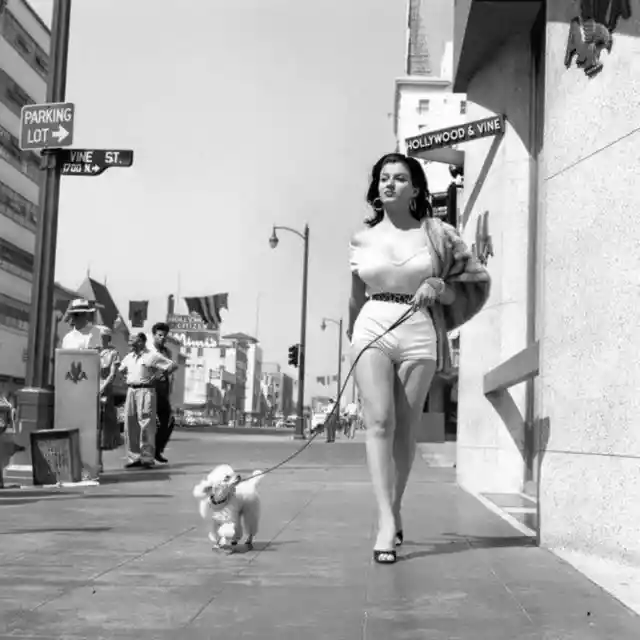
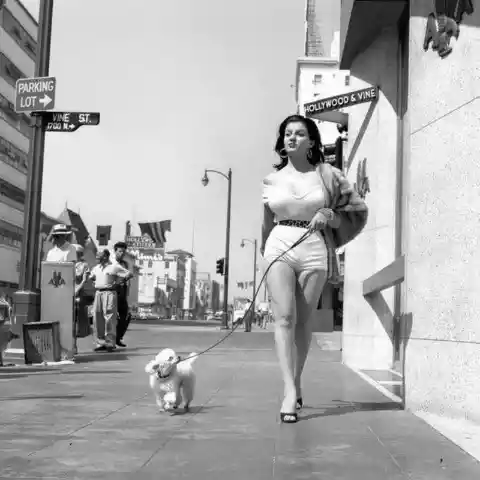
Let me tell you a story about glamour, talent, and a Hollywood transformation. Joan Bradshaw was the epitome of a triple threat – a model, actress, and producer rolled into one dazzling package. They even dubbed her "The Bust of MGM" during her stint as a cheesecake model.
But here's where the plot thickens. After gracing the screens in a string of low-budget beach and dance-themed movies, Bradshaw decided to take a significant detour. At the tender age of 25, she tied the knot with film producer Frank Ross in 1961. And just like that, her acting career took a back seat, but Hollywood wasn't ready to let her go.
No, Bradshaw didn't vanish into the shadows. Instead, she migrated behind the camera, carving a new path for herself. She dabbled in production management, learning the ins and outs of movie-making from a different perspective. But her journey didn't end there.
In a twist worthy of a Hollywood script, she emerged as a bona fide producer, lending her expertise to hit films like "Mrs. Doubtfire" and "Castaway." Joan Bradshaw, the original triple threat, had reinvented herself as a powerhouse behind the scenes, leaving an indelible mark on the world of cinema.
Gothic Revival: Where Haunting Meets History


Let's step back in time to an era where architectural marvels whispered tales of the past. It's the spooky house that could easily house the Addams Family or the Munsters, but there's more to it than meets the eye. You see, this peculiar abode is a part of the age-old tradition of Gothic Revival architecture, a movement that traces its roots all the way back to 1740.
Now, what's the deal with this Gothic fascination, you ask? Well, it turns out people have always been enchanted by the enigmatic allure of Gothic design. It's a style that takes inspiration from medieval aesthetics, and it found its prime during the 19th century. But where did these eerie-looking structures usually pop up?
Surprisingly, Gothic Revival homes weren't just reserved for haunted mansions. They graced the countryside and small towns alike, serving as robust dwellings that have weathered the test of time. With towering heights that practically begged for ivy and vines to climb their walls, these houses often appeared more haunted than they truly were.
Yet, there's an undeniable charm in living within these architectural time capsules. The Gothic Revival movement, where haunting aesthetics meet historical significance, continues to weave its spell on those who appreciate the allure of the past.
The Rat Pack: Masters of Cool in the Swinging '60s
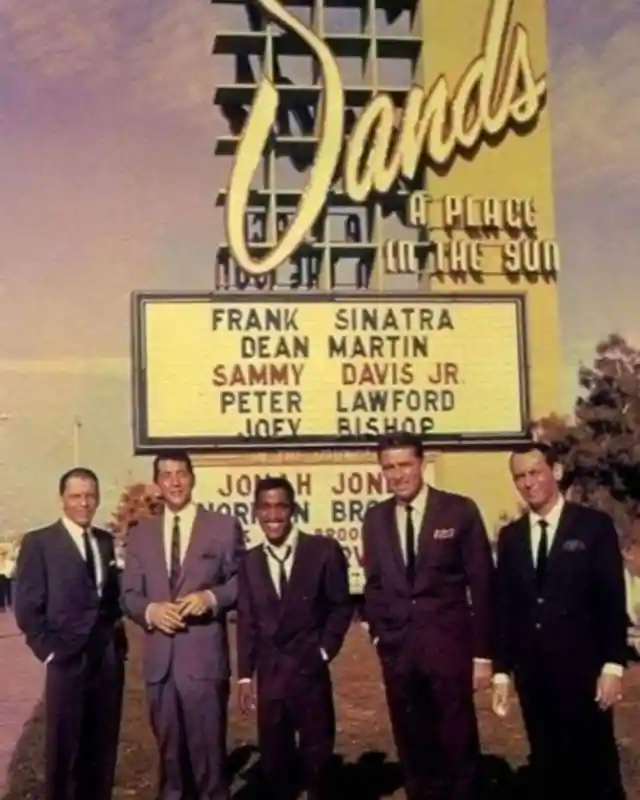
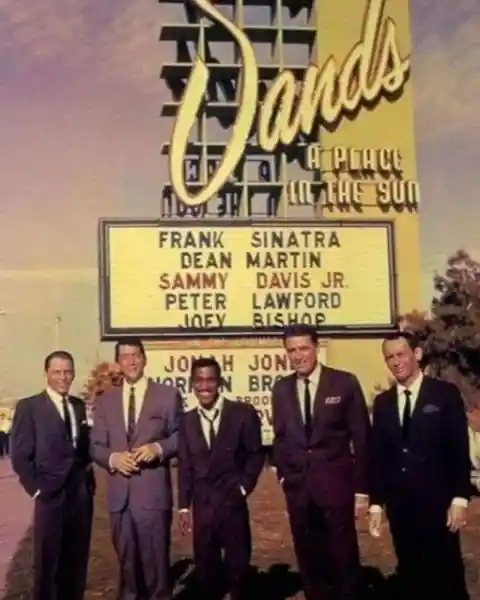
It's the swinging 1960s, and the Rat Pack is in town. Back then, there was no one cooler than these guys. They weren't just a group of performers; they were a gang, a brotherhood of hard living, hell-raising icons who made even the wildest behavior look good, all while donning their impeccably tailored suits.
In those days, if you wanted a taste of true entertainment and an overdose of charisma, you packed your bags and headed straight to Las Vegas. It was the Rat Pack's kingdom, and they ruled it with style. Frank Sinatra belting out classics, and Sammy Davis Jr. dropping in for a surprise performance – where else could you find that kind of star-studded magic? Nowhere else, baby.
The Rat Pack wasn't just a passing fad; they etched themselves into the annals of pop culture as the epitome of cool. Their style choices and timeless sounds continue to influence generations, and it's safe to say that their legacy will remain in vogue for a long, long time.
Rock 'n' Roll Love and Turmoil: The Story of Lindsey Buckingham and Stevie Nicks
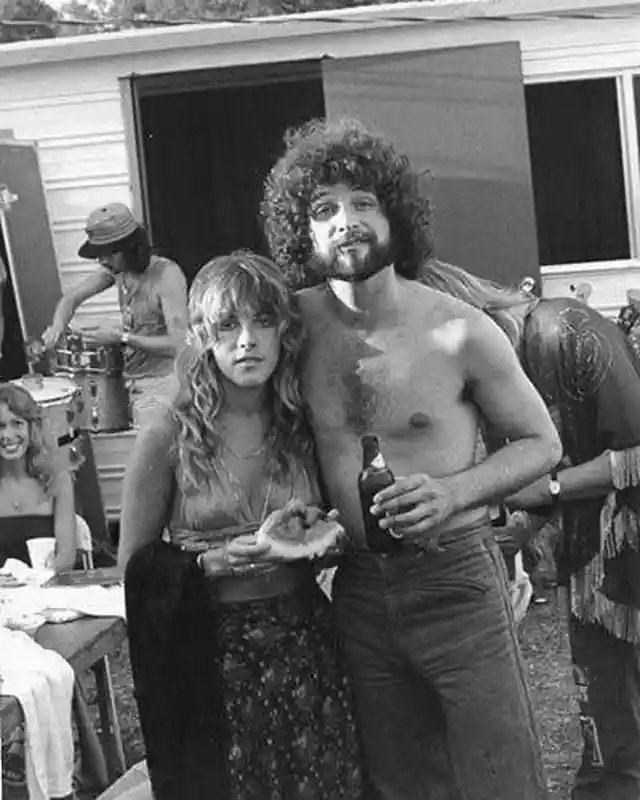
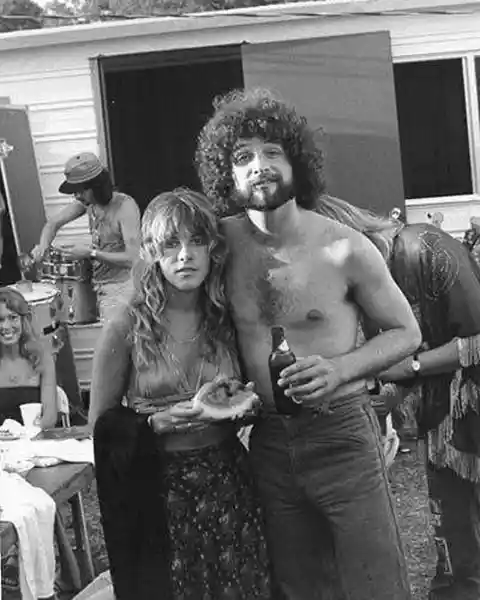
Back in 1966, at a high school party where the music was loud and the vibes were right, destiny had a plan. That's where I first laid eyes on Lindsey Buckingham and Stevie Nicks, two names forever entwined in the tapestry of rock 'n' roll. By '68, they weren't just high school sweethearts; they were a musical duo, serenading audiences with their harmonious melodies. They may have started small, but they were destined for greatness, opening for rock legends like Jimi Hendrix.
Then, like a beacon of hope in the world of rock 'n' roll, Mick Fleetwood came into their lives. Joining Fleetwood Mac was like answering the ultimate rock 'n' roll prayer for Lindsey and Stevie. It was their golden ticket to the big leagues.
Now, Fleetwood Mac might not have had the reputation for being as hard-partying as some of their peers, but don't let that fool you. Behind the scenes, they were a swirling tornado of sex, drugs, and, of course, rock 'n' roll. They fought amongst themselves, they hooked up, they fought some more, and in the midst of all that emotional turmoil, they did something truly remarkable. They created "Rumours" in 1977, an album that would go down in history as one of the greatest rock records of the '70s, if not all time.
The Grit and Guts of Coal Miners: A Glimpse into the Past
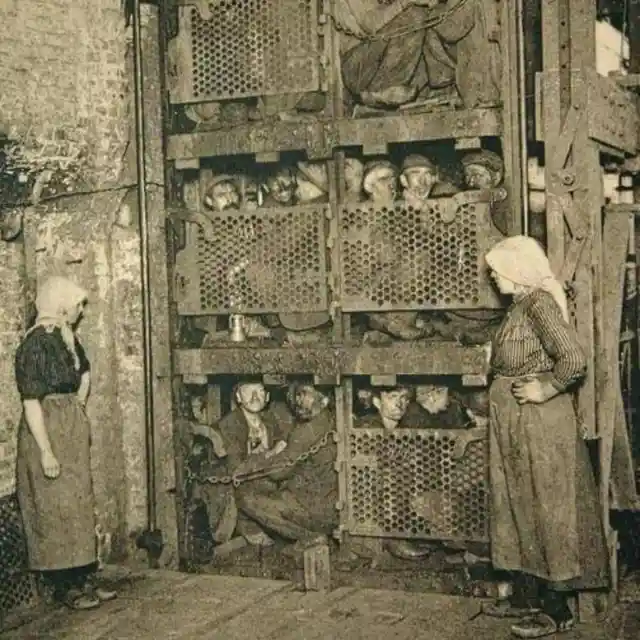
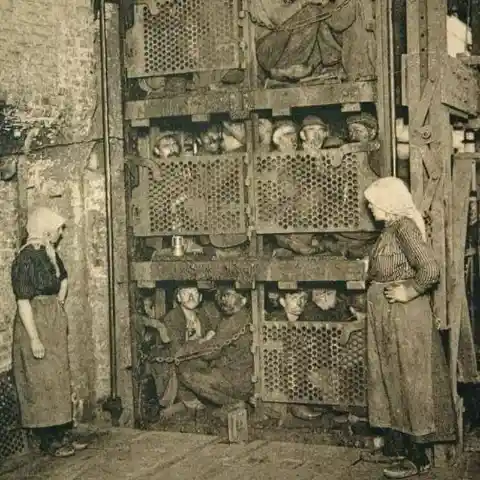
It's the turn of the century, and coal miners, whether they're toiling away beneath the Appalachian hills of West Virginia or deep in the heart of Belgium, share a common thread of facing terrifying conditions. These men, packed together like sardines in a tin, are Italian and Belgian workers who embarked on a journey to Western Europe in search of employment opportunities.
During this era, coal miners weren't held in high regard. They were treated as if they were expendable, mere cogs in the machinery of industry. There were no safety nets, no regulations to protect their health or well-being. It was a tough and unforgiving life they led.
Fast forward to today, and coal mining remains a perilous profession. The risks are still very real. But back in 1900, there were hardly any laws or protections in place to shield these brave souls who ventured into the depths of the Earth each day, risking life and limb to ensure that the world's energy needs were met. Their story is one of grit, guts, and the unwavering spirit of those who powered the world.
Breaking Barriers: Mary Wallace, Chicago's Trailblazing Bus Driver

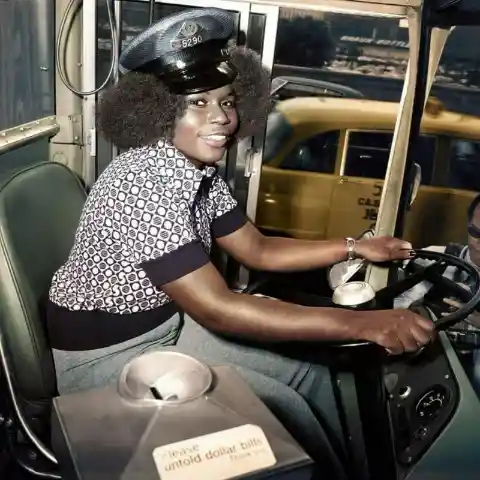
It's the late 20th century, and I'm about to embark on a journey that would rewrite the rules. It's wild to think that it's only been around 40 years since I, Mary Wallace, became the first female bus driver for the Chicago Transit Authority (CTA). You'd assume that the CTA would have recognized women's potential earlier, but back then, misogynistic hiring practices were still the norm.
Getting my foot in the door was no easy feat. I bombarded the CTA with job applications, refusing to back down despite their excuses. They claimed they couldn't hire women due to a lack of facilities, but I was adamant. I didn't want to settle for anything else; I wanted to drive a bus. It took three years of relentless persistence, and finally, they sent me a letter – not of employment but of consideration. They wanted me to undergo some tests, and I eagerly complied. Then came another three or four months of radio silence. Just when I had almost given up hope, another letter arrived, offering me a position as a driver. That was the turning point, and the rest, as they say, is history.
The Melodic Life of Graham W. Jackson

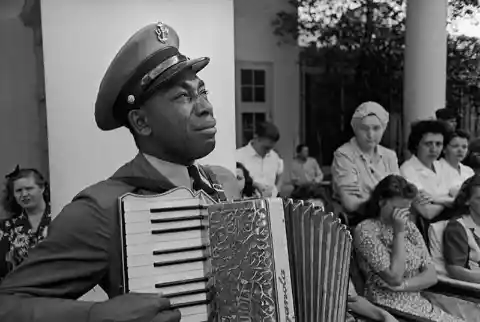
Born in 1903, my life journey led me through a musical odyssey that touched many hearts. I was Graham W. Jackson, a versatile writer and performer, skilled with the organ, piano, accordion, and choral conducting. My talents took me to grand stages, including the Royal Theatre and Bailey's "81," where my melodies found their audience.
The zenith of my musical career came when I joined the faculty at Washington High School in Atlanta, where I took up the mantle of music director, a role I held until 1940. But it wasn't just about performing and educating; life had more in store for me.
I found myself in the company of greatness, forging a close friendship with Eleanor and President Franklin D. Roosevelt. In a remarkable moment of collaboration, President Roosevelt and I were at the Little White House, working on our rendition of Dvorak's "Goin' Home," just a day before the world lost FDR.
A poignant photograph captures the essence of that time – me playing the same tune as Roosevelt's funeral train departed from Warm Springs. When asked about that moment, I recalled, “The photographer stumbled over my foot and looked up. He saw my face and saw those tears coming down my cheek, and he just reached around on his shoulder and got one of his cameras and - blip - and thought no more of it.” This image froze a poignant piece of history, forever etching the emotional connection between my music and those who listened.
The Resilience of Muhammad Ali
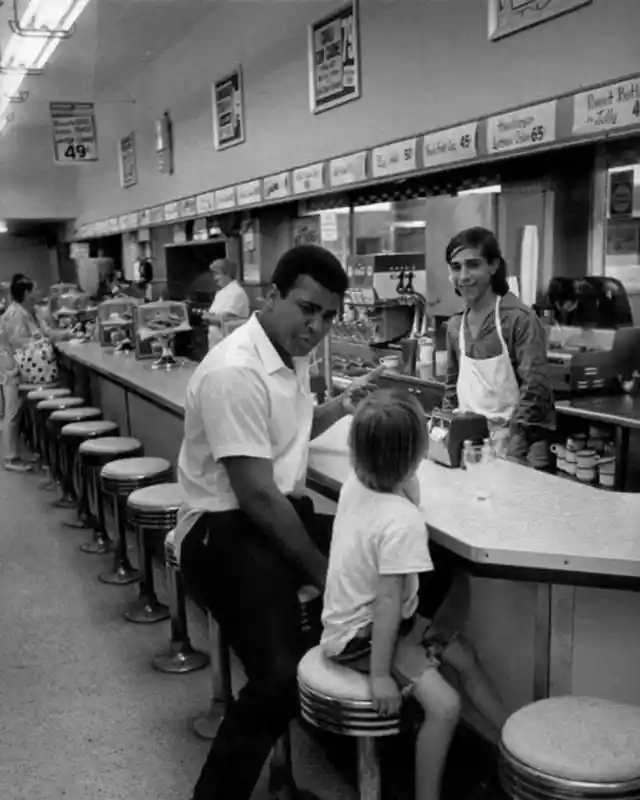
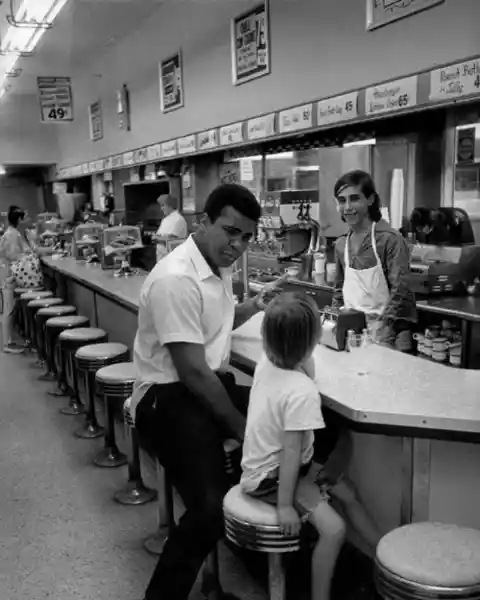
Back in the day, people thought they could count me out, but little did they know, I was far from being down for the count. It all began when I decided to take a stand for civil rights in the tumultuous 1960s and adopted a new name that resonated with my Islamic beliefs. The America that once cheered for me turned its back.
Things took a drastic turn when I refused to be a part of the military service during the Vietnam War. As a consequence, they stripped me of my beloved boxing titles and banned me from the sport that flowed through my veins. All because I dared to speak my truth.
But on that fateful day, October 26, 1970, I stepped back into the ring to face Jerry Quarry. In just three rounds, I brought Quarry down and proclaimed to the world that the king had returned. The photo you see here captures a touching moment – my youngest fans, regardless of their race, never abandoned me. To them, I remained a true American hero.
Breaking Barriers on Mister Rogers' Neighborhood

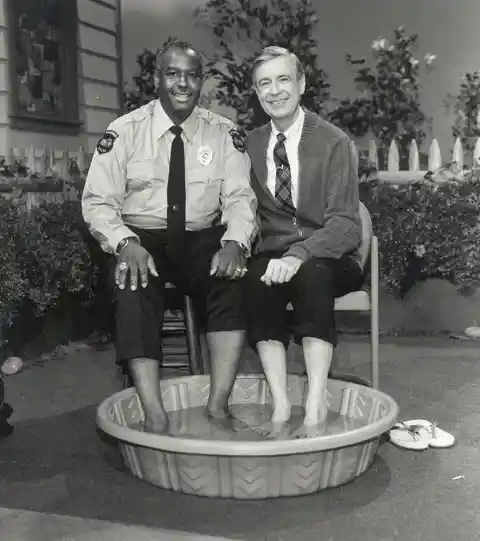
Back in the late '60s, I found myself stepping into a groundbreaking role on television. They called me "Officer Clemmons" on the beloved PBS series Mister Rogers' Neighborhood, and I held onto that title from 1968 to 1993.
My very first appearance, in 1969, was a significant one, and it happened right in the midst of the Civil Rights movement. I'll never forget that moment when I shared a foot bath with the one and only Mr. Rogers himself. It was a forward-thinking move, no doubt, but there was something I had to keep hidden – my homosexuality. To be honest, it was painful to keep that part of me tucked away.
You see, Mr. Rogers had asked me to do this, to keep my personal life under wraps, and I agreed. I didn't want to bring scandal to the show that had given me so much, and I recognized the value of being a black performer with this national platform. You know, the reality is that for black actors and actresses, the struggle to find work is real. So, despite the internal conflict, I chose not to sabotage myself and to continue playing my part.
A Chance Meeting on the Road to Woodstock

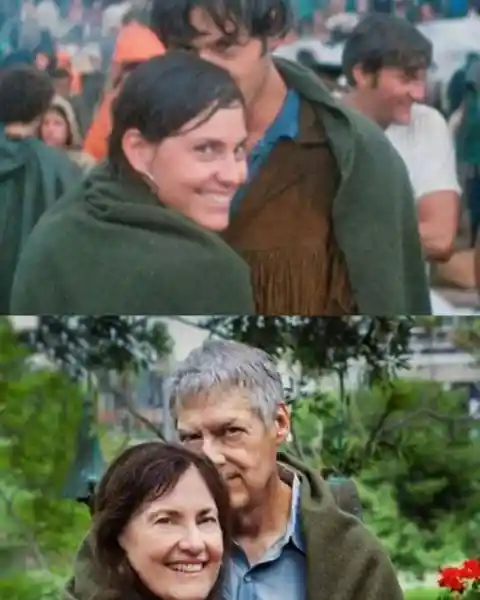
Fifty years together, and it all started on the road to Woodstock – now that's a story worth telling. You see, Judy and I crossed paths in the most unexpected way, and I can't help but marvel at the twists of fate that brought us together.
As Judy recalled in her chat with People Magazine, her car chose the worst possible time to break down on the way to that iconic festival. Imagine the frustration and anxiety, stranded on the road to Woodstock. But as fate would have it, a glimmer of hope arrived in the form of a group of people led by yours truly.
I remember pulling up in our vehicle, and Judy peered inside. To her surprise, she spotted another woman in our car. Now, hitchhiking wasn't something she'd ever done before, but seeing that woman made her feel a bit safer, and she decided to take a chance. That single moment, that decision to hop into our car, was the start of something truly remarkable.
Woodstock was a pivotal moment in American history, and as we reflect on those times, it warms my heart to think that Judy and I have remained together all these years, keeping the spirit of the '60s alive in our own way.
Embracing the Retro Cool of the Philco Predicta


Sure, the Philco Predicta may seem a tad unwieldy by today's standards, and gathering the whole family around it might require some logistical finesse, but there's something undeniably cool about this vintage television set. You see, the Predicta was born in an era when people were gazing forward with unbridled optimism, and our appliances were expected to reflect that sense of hope for the future.
Philco had a knack for crafting TV sets with designs that were nothing short of fascinating and iconic. They were the darlings of the "space age" aesthetic, and their television sets, including the Predicta, were in vogue between 1958 and 1960. If you were lucky enough to have one of these beauties gracing your living room or den, you were undeniably living in style.
Fast forward to today, and you might still stumble upon these vintage Predicta sets in pawn shops or secondhand markets. Why not embark on a retro treasure hunt and bring a piece of that groovy '50s and '60s style back into your life?
Feeding Black Bears in Yellowstone: A Bygone Era
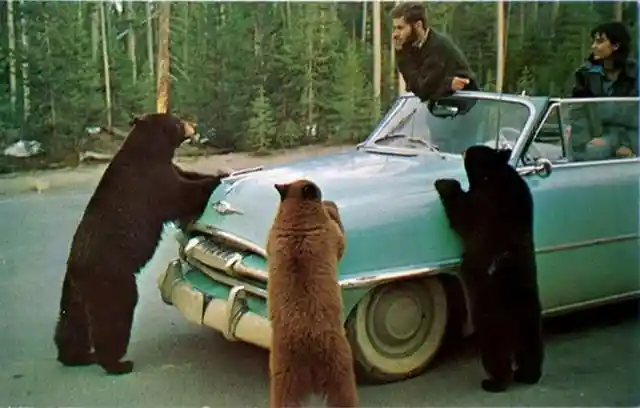
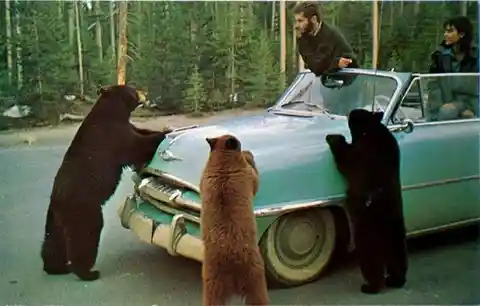
Imagine this: you're in Yellowstone National Park, surrounded by pristine wilderness and towering trees. The year is somewhere between 1910 and 1960, and you're not just observing nature from a distance – you're part of it. During this unique period in the national park's history, visitors were allowed to feed black bears right along the park's roads.
It was during these early days of the national park system that black bears became synonymous with Yellowstone, etching their place in the park's lore. Even today, when Yellowstone enters a conversation, these iconic creatures often come to mind.
Picture the scene: a sense of wonderment filling the air as a few curious bears amble over to see what you're up to. It's an experience that's almost unimaginable in today's world of strict wildlife regulations and conservation efforts.
Capturing Generations in Papua New Guinea: A Glimpse into Time
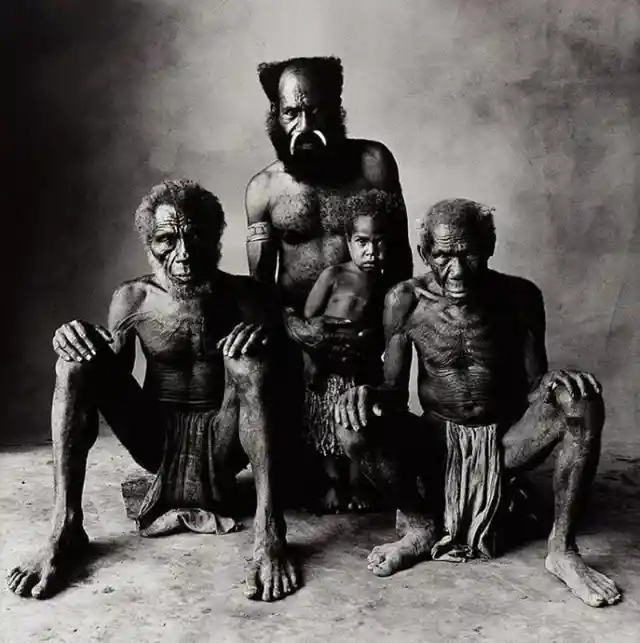
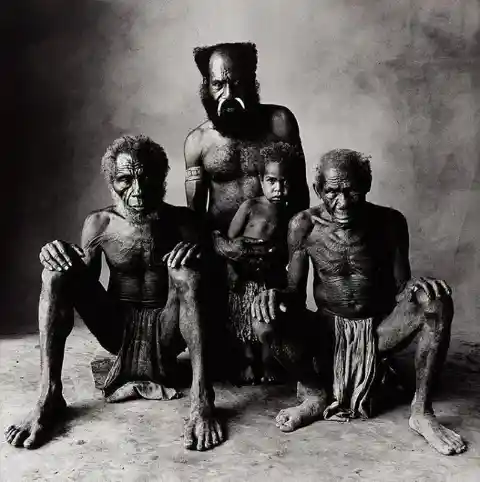
It was back in the 19th century when Italian naturalist and explorer Luigi Maria d'Albertis first set foot on the captivating island of Papua New Guinea. Westerners have been intrigued by its people for over a century, yet they remain an enigmatic and mysterious culture.
In Papua New Guinea, photography is typically off-limits, as the locals believe it can forever darken their spirits. This belief adds an extra layer of intrigue to the photograph.
This captivating image doesn't just depict four generations of tribespeople; it also serves as a poignant reminder that, in some corners of the world, the more things change, the more they stay the same. It's a glimpse into the timeless tapestry of this unique culture.
A Trip Back to 1972: The Godfather Phenomenon
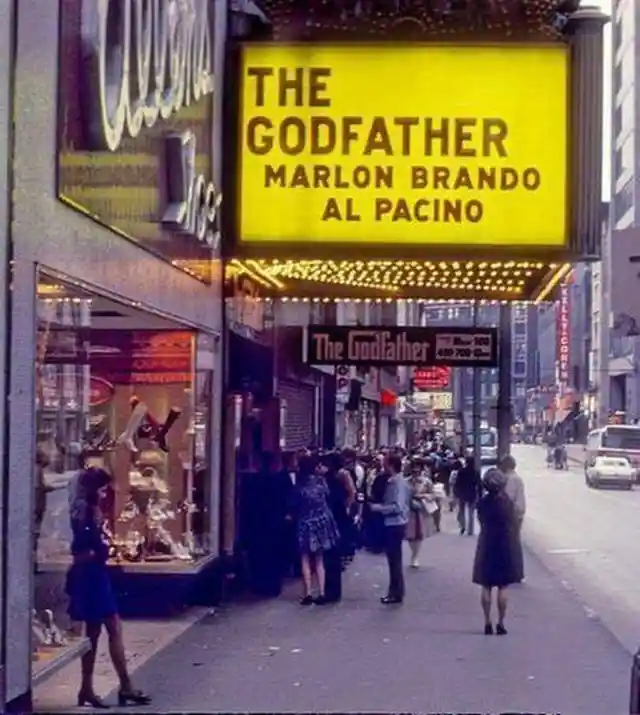
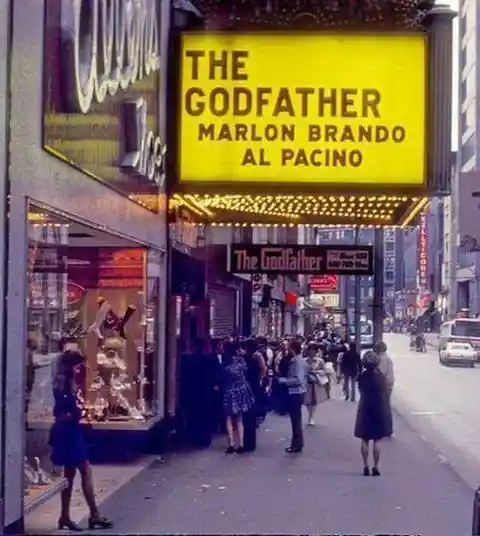
It's 1972, and the streets are buzzing with the excitement of heading to the local theater to catch a film, a casual pastime that feels like a distant memory today. One such cinematic event that year was "The Godfather," a must-see for anyone with a passion for movies. This epic masterpiece not only boasted a stellar cast of some of the greatest actors of the era but also promised an engrossing experience like no other.
Surprisingly, when it came to casting the pivotal role of Michael Corleone, Al Pacino was director Francis Ford Coppola's top choice. However, Paramount Pictures had a different agenda. They insisted on putting Coppola through a rigorous audition process involving practically every actor in Hollywood before reluctantly allowing the young Pacino to join the project. As Robert De Niro recalled, "Francis wanted Al. But every actor knew about it, and I think the studio was forcing him to look [elsewhere], from what I understood of it. And I never confirmed this with Francis, but they were putting pressure on him to use somebody other than Al."
The Eccentric Anteater Adventures of Salvador Dalí
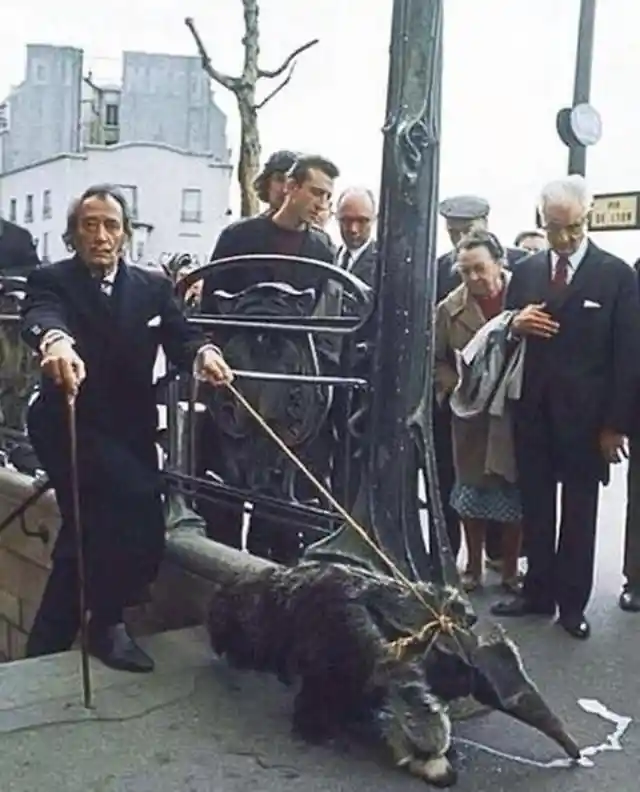
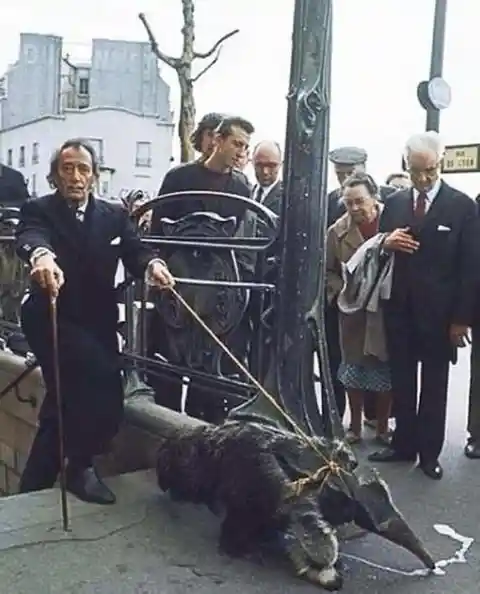
Let's dive into the wonderfully bizarre world of Salvador Dalí, where making a spectacle was a way of life. Dalí was a master of eccentricity, be it through his mind-bending artwork featuring melting clocks or his iconic mustache that defied convention. But he didn't stop there; he extended his flair for the dramatic to his choice of clothing and even his choice of pet.
Enter the anteater, an unusual and wild companion for anyone, let alone an artist like Dalí. But this wasn't just about shock value; in 1930, Dalí created a bookplate for André Breton, often regarded as the father of surrealism, where he depicted Breton as an anteater. This intriguing detail adds depth to the story.
Was Dalí trying to convey a hidden message to Breton, the anteater serving as a surreal symbol? Or was he simply reveling in the attention and curiosity that came with having such a peculiar pet? The truth may forever remain a mystery in the enigmatic world of Salvador Dalí.
A Glimpse of Sioux Childhood

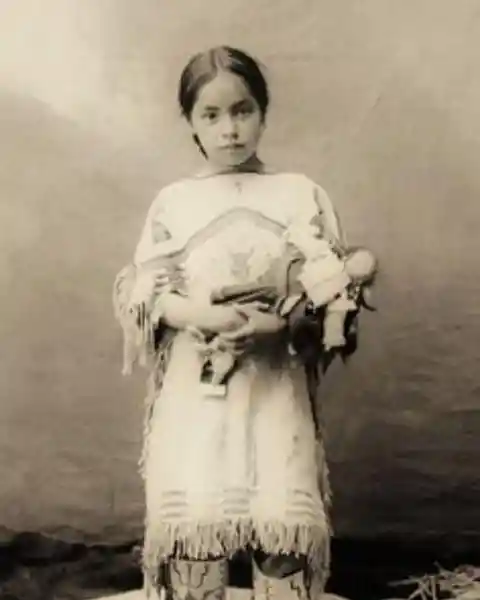
Rarely do we get such an unfiltered glimpse into the lives of Native American children from the 19th century. In those days, having your photograph taken was a luxury not afforded to most people, especially those who lived far from photographers' studios.
Imagine this young member of the Sioux Nation, on a journey to the city with her parents. It must have been an extraordinary occasion, and just like kids of today, she clung tightly to her cherished doll, unwilling to part with it for even a moment.
That doll was likely her most treasured possession, a piece of comfort and familiarity in a world of change. It's easy to understand why she would resist setting it aside, even for the magical moment of being captured on film.
Remembering Jim Henson

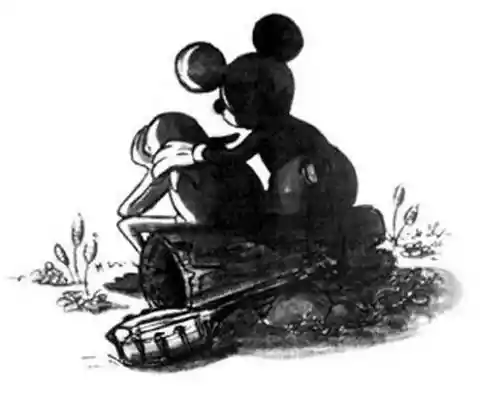
When Jim Henson, the creative genius behind The Muppets, passed away on May 16, 1990, the loss was profound. It wasn't just the animation community that felt the reverberations; it was the entire world. Henson's imaginative work with The Muppets had touched the hearts of countless people, brightening their lives with laughter and joy.
Henson was a man who knew the fleeting nature of life, and he had a unique request for his funeral – no mourners in black attire. Instead, he wanted a celebration of life. As the cast of The Muppets sang a series of songs, the atmosphere was both poignant and uplifting. But it was the Dirty Dozen Brass Band that brought the house down, concluding the funeral on a high note.
I can't help but get a little teary-eyed thinking about that emotional performance. Frank Oz, a close collaborator and friend of Henson, summed it up beautifully: "Jim was not perfect, but he was as close to how you're supposed to behave toward other people as anyone I've ever known. Without Jim, I'm a pretty serious person at times. He was the leader always, but he allowed us to play. We had so much fun. I can't begin to tell you the fun." Jim Henson's legacy lives on, bringing joy and laughter to generations.
The Beatles' Epic Rooftop Performance
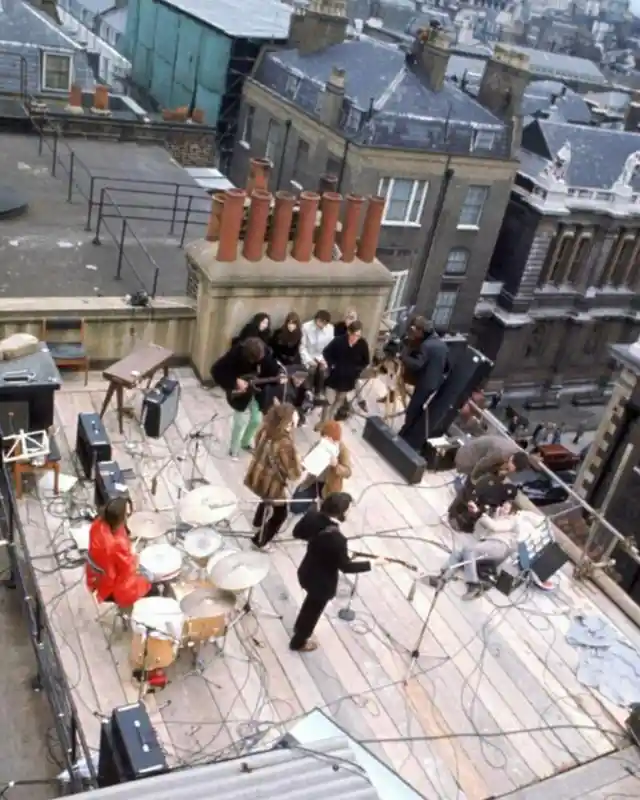
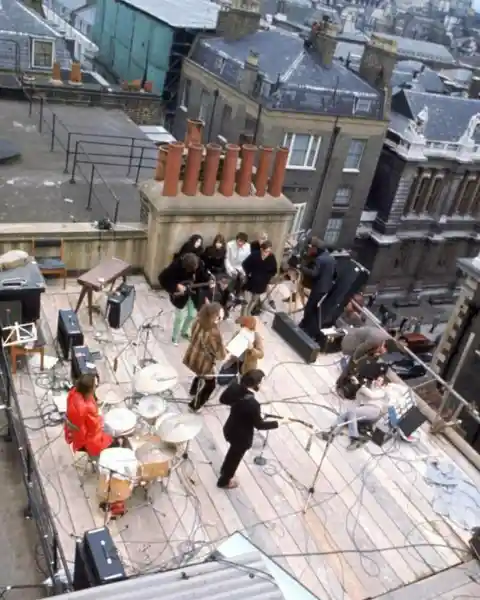
It's a chilly day in London, and there, on top of their office building at 3 Savile Row, the Beatles are about to make history. This rooftop performance would mark the last time the Fab Four truly played together in front of a live audience.
The story goes that their plans to film a grand comeback on stage didn't quite pan out. So, in a spontaneous move, the band, joined by keyboardist Billy Preston and a camera crew, made their way up to the rooftop. However, as they stood there, they weren't entirely sure if they should take the stage again.
But, luckily for music lovers around the world, they did go through with it. The Beatles launched into an unforgettable performance that echoed through the streets of London, giving fans a moment in time that would forever be etched in the annals of rock 'n' roll history.
When "You Get No Hot Dog" Meant Business

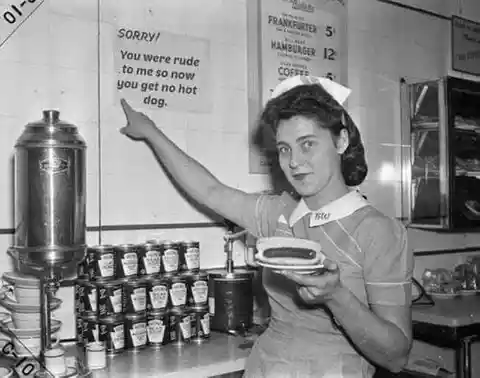
Back in the early 20th century, dining out was a different experience altogether. It wasn't about bending over backward to please every customer; it was about running a respectable establishment. Those who worked at diners were often the owners or dedicated long-term employees, and they had no patience for unruly patrons.
One way they kept things in check was by posting signs like the infamous "you get no hot dog." It wasn't an empty threat; it was a stern reminder that misbehavior wouldn't be tolerated. Customers were put on notice that if they acted up or disrupted the peace, they'd find themselves searching for a meal elsewhere.
It's a curious piece of history, isn't it? Did signs like these effectively maintain order, or did they just add an extra layer of gruffness to the dining experience? The answer, well, that's a slice of history we may never fully digest.
Riding the '70s Chopper Dream
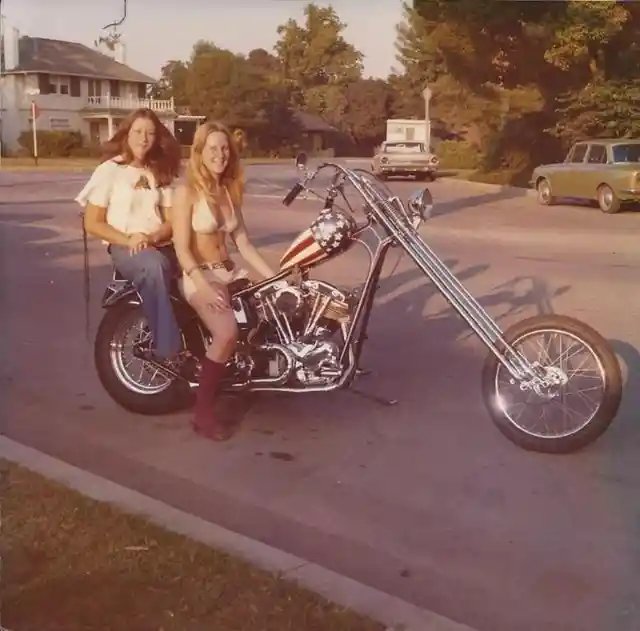
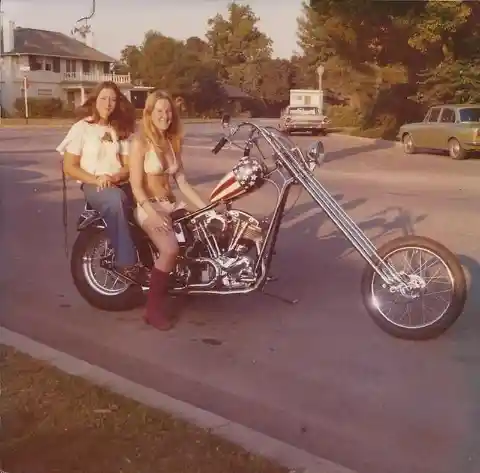
Back in the '70s, there was no vehicle quite as iconic as the chopper motorcycle. The sight of one of these bad boys, with its American flag gas tank and rebellious spirit, instantly transports you to a different time and place.
A time when hitting the open road meant freedom, when your biggest concerns were fuel and where to grab your next meal. It was the era of the bicentennial celebration, long before the digital age took over our lives.
These groovy chicks in the photo might not have realized it then, but they were living the dream. Cruising on that chopper, wind in their hair, they were on an adventure through the heart of a bygone America. Let's hope that somewhere, tucked away in a garage, that classic bike still stands, a symbol of their unforgettable journey through time.
Capturing Moments with Furry Friends
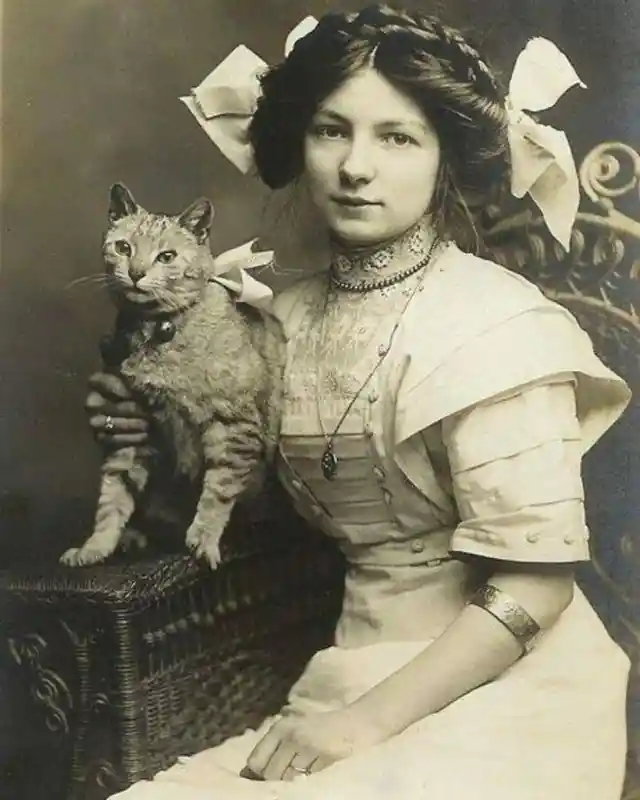
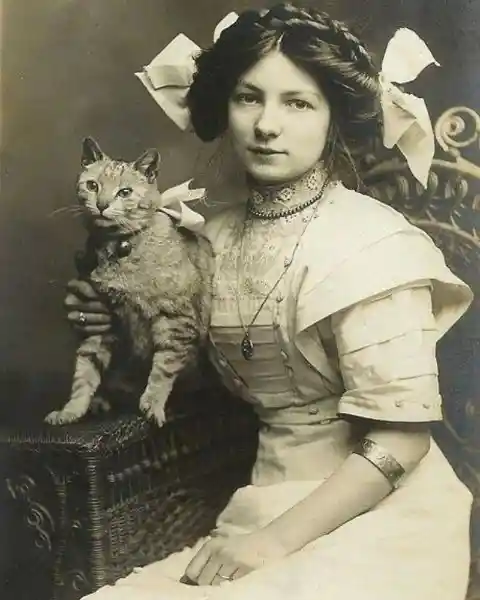
Throughout history, there's one constant that seems to transcend time and culture: our unwavering love for our pets. No matter the era or location, people have always cherished the idea of having their photographs taken or their portraits painted alongside their beloved animals.
If you dig deep into the annals of art history, you'll stumble upon countless pieces that date back to the earliest civilizations, depicting men and women sharing their lives with their furry companions. It's heartwarming to realize that, in essence, we haven't changed all that much over the centuries.
Now, the burning question is this: How on earth did this young woman manage to convince her feline friend to sit still long enough for a photograph? Perhaps her cat was unusually well-behaved, or maybe she struck a deal with him, promising a plump, juicy mouse as a reward for his cooperation.
Cesar Romero: From Lotharios to the Clown Prince of Crime
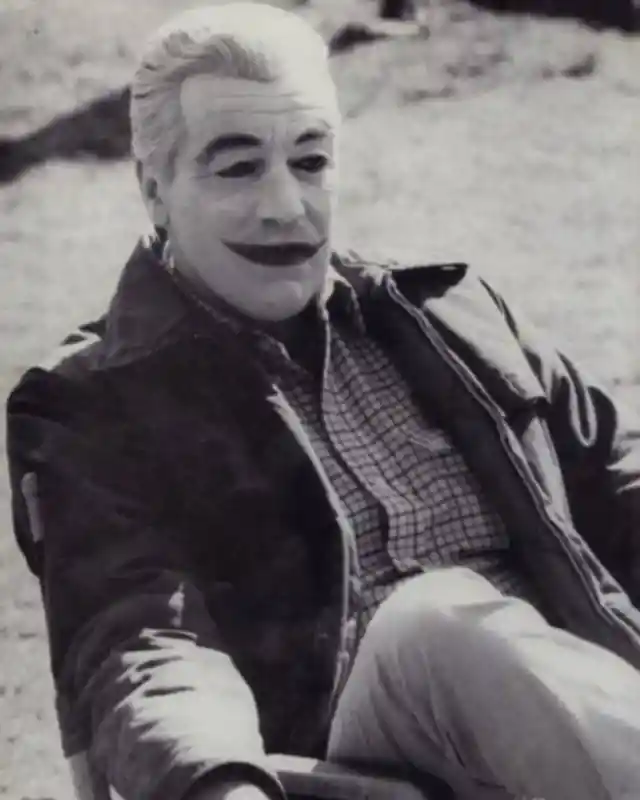
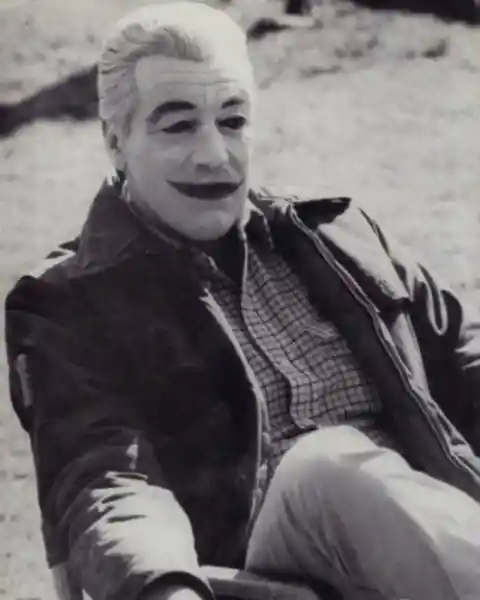
In the world of Hollywood, surprises often come when you least expect them. Case in point: Cesar Romero, the 6-foot-3 "Latin from Manhattan" known for his roles as lotharios and gangsters, donning the iconic mantle of Gotham City's own Joker, the clown prince of crime. It's safe to say that this casting decision left viewers scratching their heads in disbelief.
But why did Romero, a seasoned actor at the age of 59, decide to take on such a peculiar role—one that required him to paint his face ghostly white and cover up his famously dashing mustache? His answer was as straightforward as it was intriguing. With a mischievous glint in his eye, he explained that playing the Joker gave him the rare opportunity to throw caution to the wind and break all the rules of traditional acting. "You can be as hammy as you want," he quipped, and the rest, as they say, is history.
Surf's Up: A Groovy Day at Malibu Beach
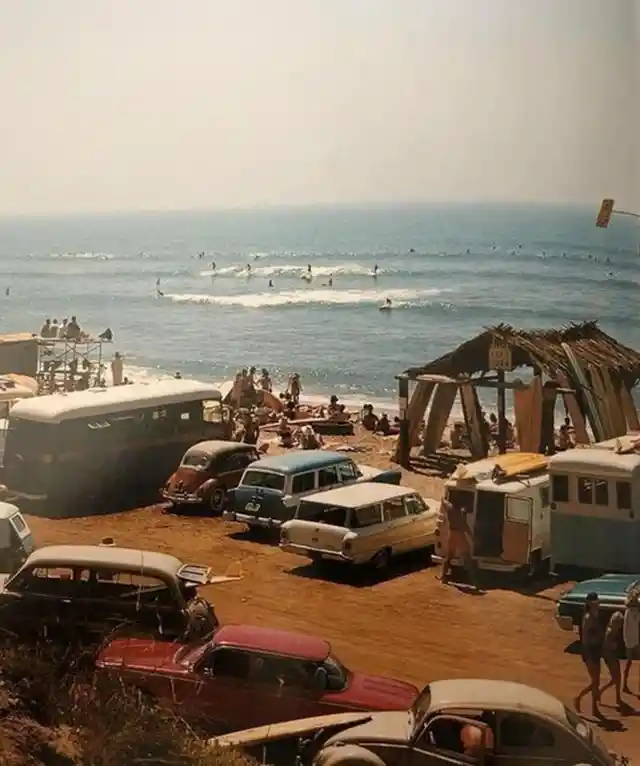
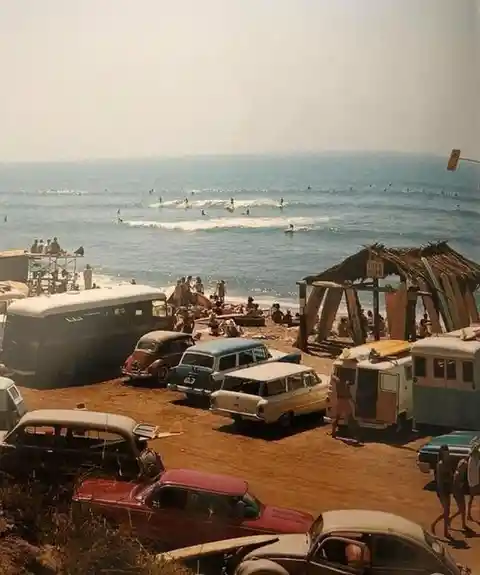
Close your eyes and take a deep breath. Can't you practically smell that invigorating salt air through this picture? Even if you're not a self-proclaimed beach bum, this snapshot of a Southern California beach is bound to stir up a longing for the bygone days of surfing safaris and sun-soaked sands.
The groovy '60s, where the infectious tunes of the Beach Boys and Jan and Dean spilled out of every car radio, setting the perfect soundtrack for the carefree days ahead. But here's the kicker—even if you weren't perched on a surfboard, you couldn't help but revel in the hot sand and endless waves of fun.
During this era, Malibu Beach was the place to see and be seen. It was a magnet for surfers catching those gnarly waves, while bikini-clad beachgoers simply wanted to leave behind the hustle and bustle of city life and soak up the sun. And really, who could blame them? Those were the days, my friend.
The Munsters: A Peek Behind the Makeup


Allow me to take you on a trip down memory lane to the era when "The Munsters" was a beloved fixture on our television screens. Yes, they were a family of monsters, but gosh, they were impossible not to adore.
A world of black and white, where this quirky family captured the hearts of viewers. It was almost like the show itself was a rite of passage for young goths, helping them fully embrace their unique identity. But here's a curious thought—what if "The Munsters" had aired in color?
Butch Patrick, the actor who brought young Eddie Munster to life, sheds some light on the situation. He tells us that despite the show being filmed in black and white, the cast donned full-color makeup. Why, you ask? Well, there were always photographers snapping away for publicity shots and behind-the-scenes pictures. It turns out, there was talk of the show transitioning to color in its third year—a natural progression, some thought. Imagine that!
Sonny and Cher: More Than Meets the Eye

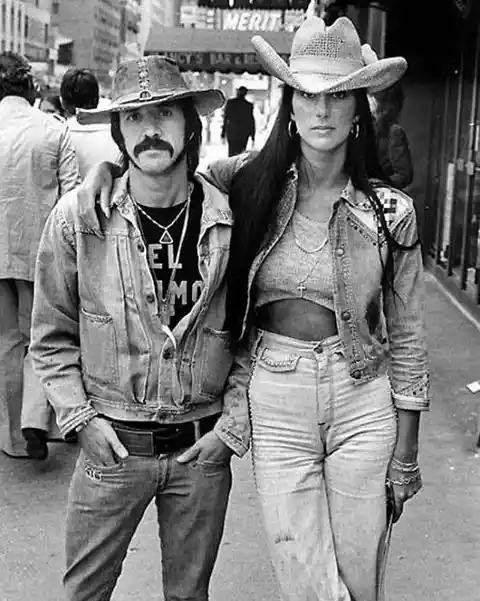
Let me take you back to a time when Sonny and Cher ruled the airwaves. They were a unique couple in every sense - they sang together, they were married, and they even had their own show. But you might be surprised to learn that their love story didn't exactly start with a burst of passion.
Cher, with her unmistakable voice and iconic style, recalls the early days of their relationship. She candidly admits that, initially, Sonny didn't show much interest in her. It's funny how things change, though. Over time, they grew on each other like a pair of old shoes that become more comfortable with each wear.
In a 1975 interview, Cher described their relationship in a way that might raise an eyebrow or two. She said it wasn't a fiery, sexy romance, but rather something akin to a paternal connection. They felt bound together, like two people who needed each other, almost for protection.
Now, I know what you're thinking. The story doesn't end there, because even though the couple went their separate ways in the late '70s, they remained an integral part of each other's lives. They continued to co-host a show together, and most importantly, they remained the best of friends. Can you imagine a world where Sonny and Cher never talked to each other again? It would've been a real drag, wouldn't it?
The Epic Tale of the Twin Towers


Let's step back in time to a period spanning four years, a time that would give birth to the iconic Twin Towers in the heart of New York City. It all began on August 5, 1966, when the first shovels broke ground. However, it wasn't until 1968 that the workers could start the monumental task of erecting the steel giants.
Fast forward to December 23, 1970, a day that would go down in history. On this day, dedicated workers hoisted the highest piece of steel onto the North Tower, soaring to a breathtaking height of 1,368 feet. It's worth noting that, back then, many New Yorkers viewed these buildings as nothing more than eyesores. Little did they know that these colossal structures would soon capture their hearts, offering unparalleled vistas that stretched an astounding 45 miles in every direction.
While the tragic events of 2001 brought the Twin Towers to a heartbreaking end, their memory lives on eternally in the hearts and minds of New Yorkers and Americans all across the land.